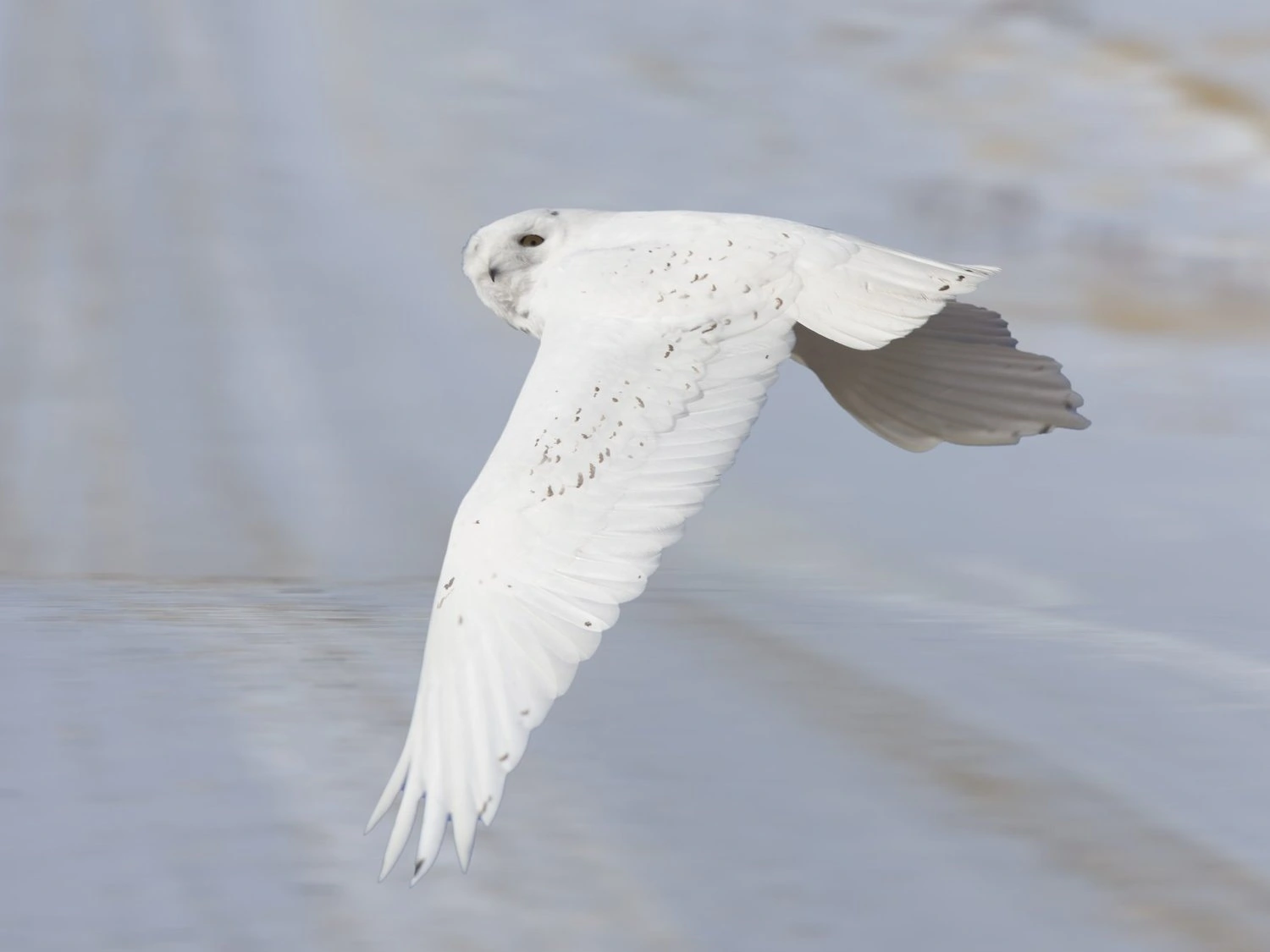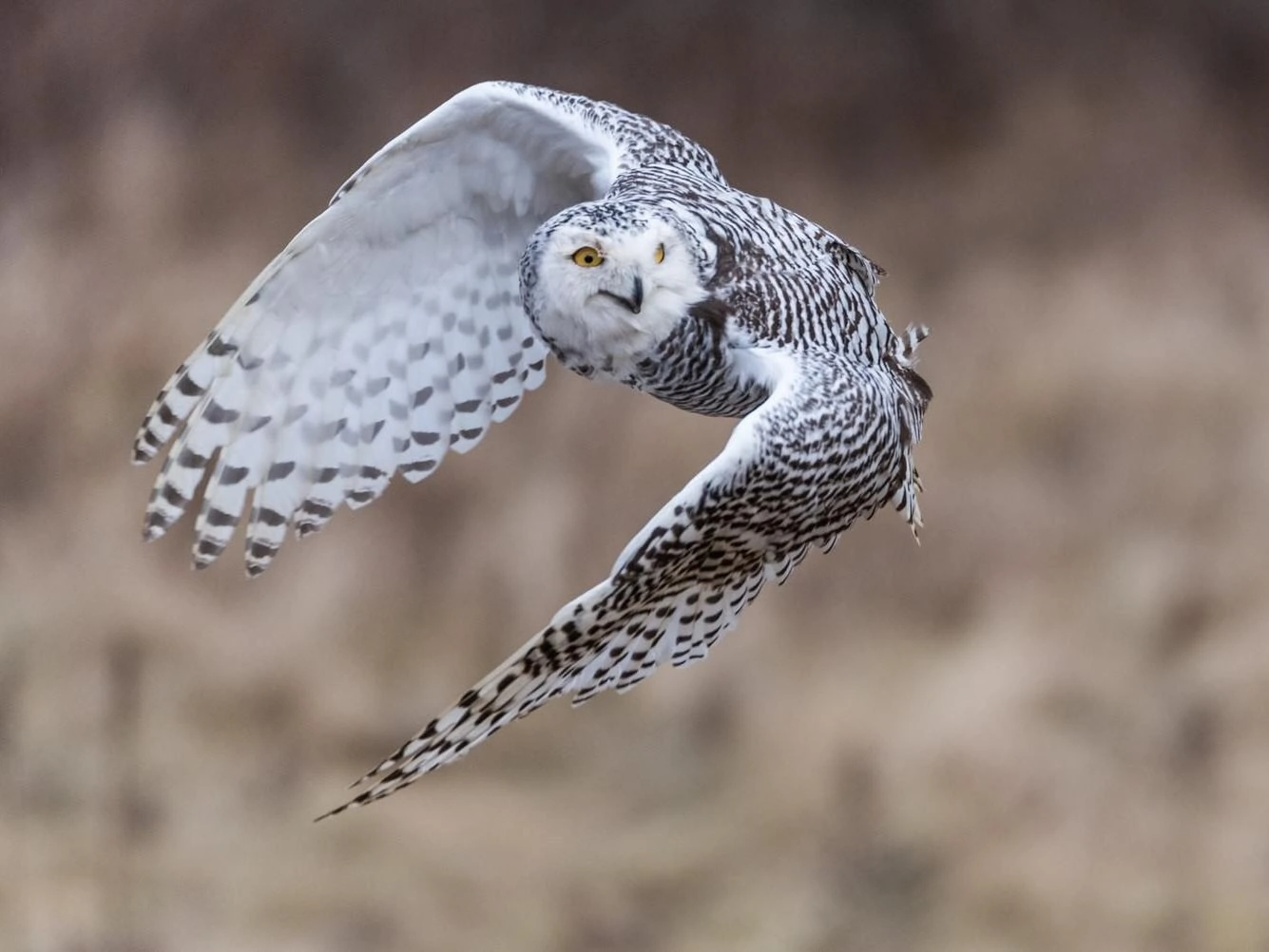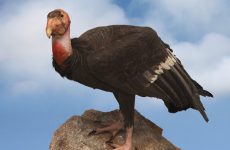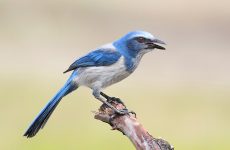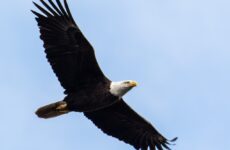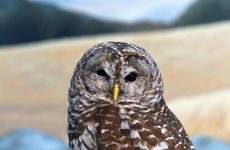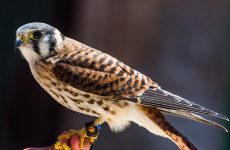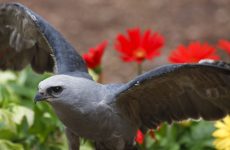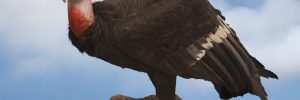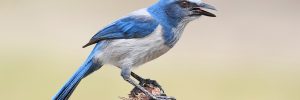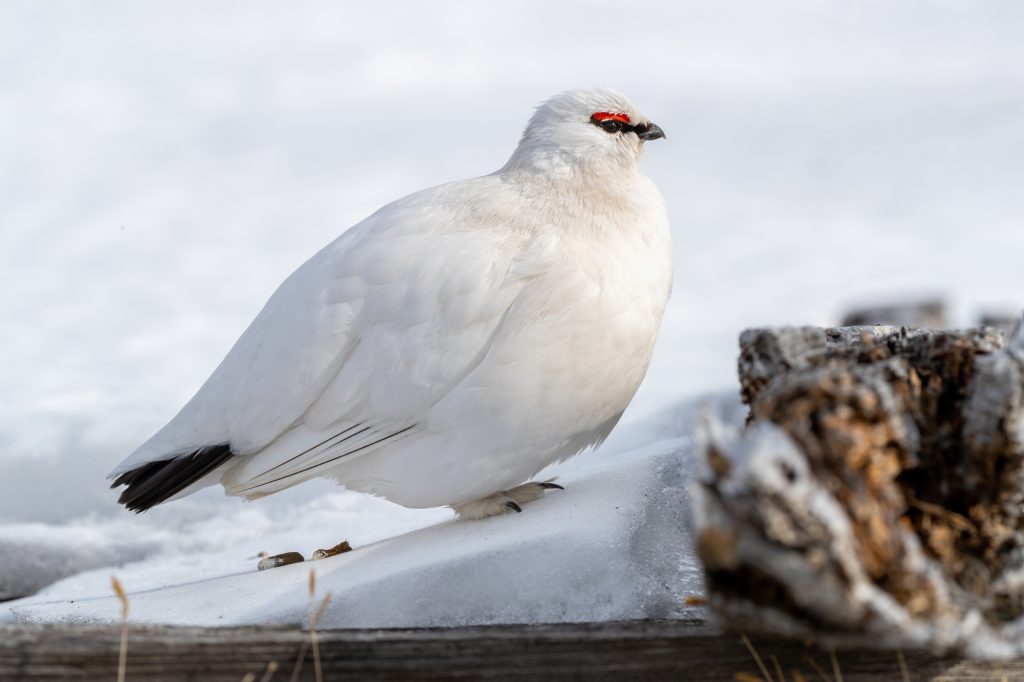
From egrets to Snowy Owls there is something mesmerizing about white birds that means you can’t quite take your eyes off of them and want to know more.
But there are so many similar-looking white birds, especially egrets, herons, and ibis. So how do you know which is which?
Well, you have come to the right place as this guide will help you identify white birds by sight and sound and know which times of the year they are in Canada to help you narrow down the options and find out more about birds near you.
White Birds In Canada By Season
White Birds in Canada all year: Rock Pigeon, Mute Swan, Trumpeter Swan, Rock Ptarmigan, White-tailed Ptarmigan
White Birds in Canada in summer: Ring-billed Gull, Great Blue Heron, Common Tern, Great Egret, Northern Gannet, American White Pelican, Willow Ptarmigan, Snowy Egret
White Birds in Canada in winter: Snow Bunting, Tundra Swan, Snowy Owl, Gyrfalcon
White Birds during migration in Canada: Snow Goose, Ross’s Goose, Little Blue Heron, Whooping Crane
This guide will help you identify those white birds out on the water or in the woods or fields and are listed from most to least common according to checklists submitted by bird watchers on ebird for Canada.
21 White Birds In Canada
1. Ring-billed Gull
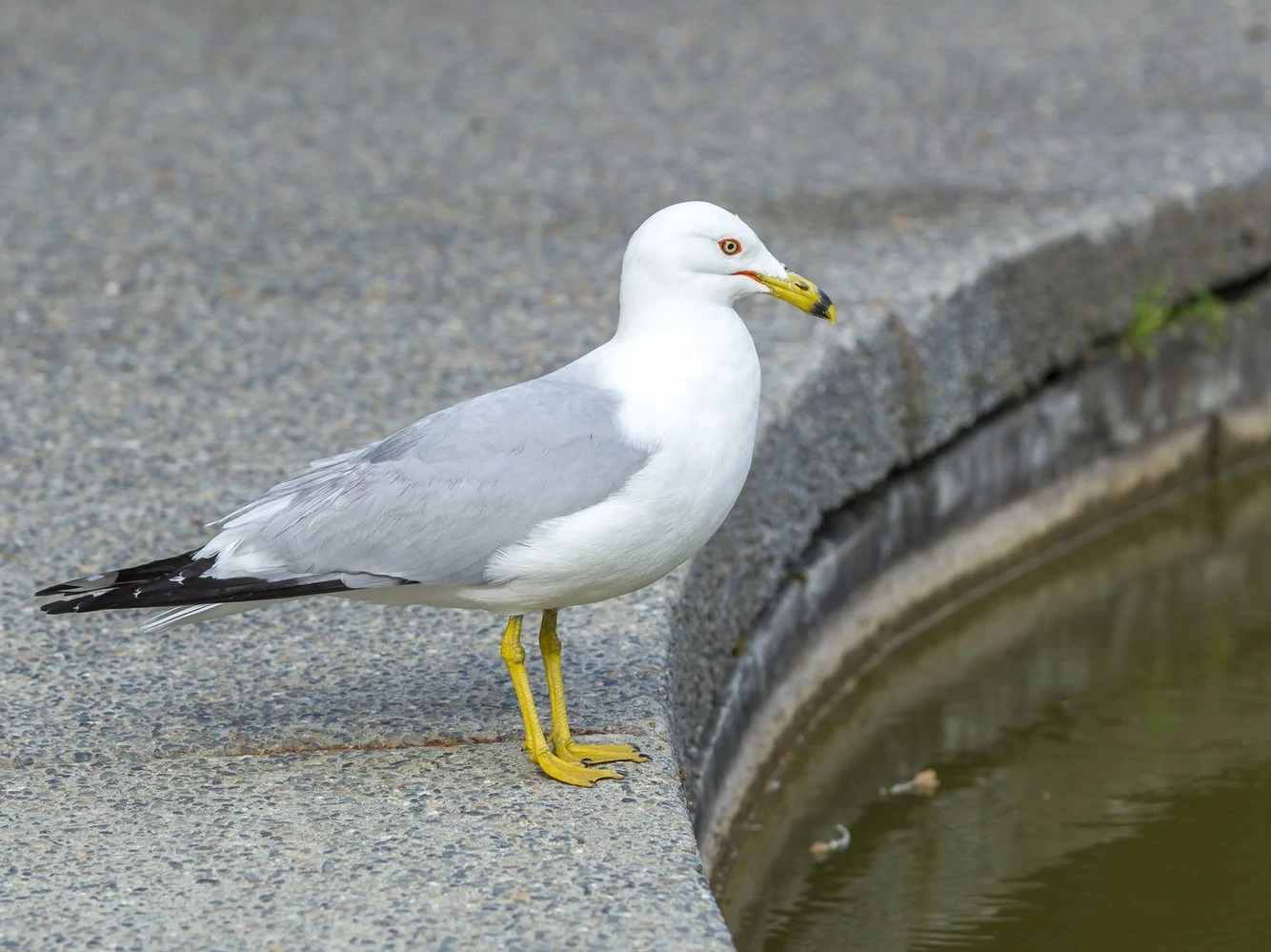
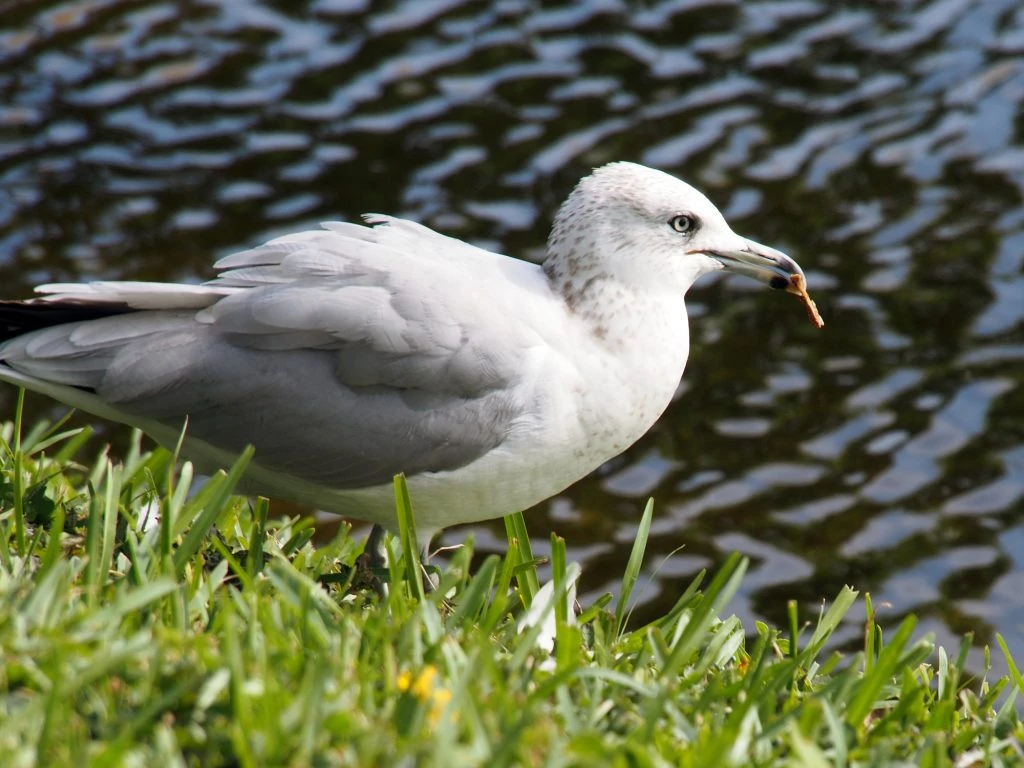
Ring-billed Gulls are very common in Canada during the breeding season but some hang around all year along the coast of the southeastern provinces.
They are recorded in 22% of summer checklists and 7% of winter checklists submitted by bird watchers for the country.
Ring-billed Gulls are medium-sized gulls that are easily identified because of their short, yellow bills with a black ring around them near the tip.
Breeding adults are generally white all-over except for their pale gray backs and wings with black tips and white spots. Their eyes are yellow, outlined with orange. They have yellow legs and feet. Males and females are similar.
The major differences between breeding and non-breeding adults are the light brown streaks on the heads and necks of non-breeding adults.
Juvenile Ring-billed Gulls are covered in brown streaks all over.
- Larus delawarensis
- Length: 18 – 19 in (46 – 48 cm)
- Weight: 20.81 oz (590 g)
- Wingspan: 47 – 48 in (119 – 122 cm)
Ring-billed Gulls breed in Canada and northern and northwestern US states. They migrate for winter to southern US states, the Pacific Coast, and Mexico.
You can find Ring-billed Gulls in urban, suburban and agricultural areas. They also inhabit coastal waters, beaches, lakes, ponds, streams, estuaries, and mudflats. They are frequent visitors to parking lots, landfills, shopping malls, and reservoirs where they tend to group in large numbers.
Ring-billed Gulls calls:
Fun Fact: Ring-billed Gulls are sometimes called “fast food gulls” because they often hang out near fast food restaurants and scavenge for food there.
2. Rock Pigeon
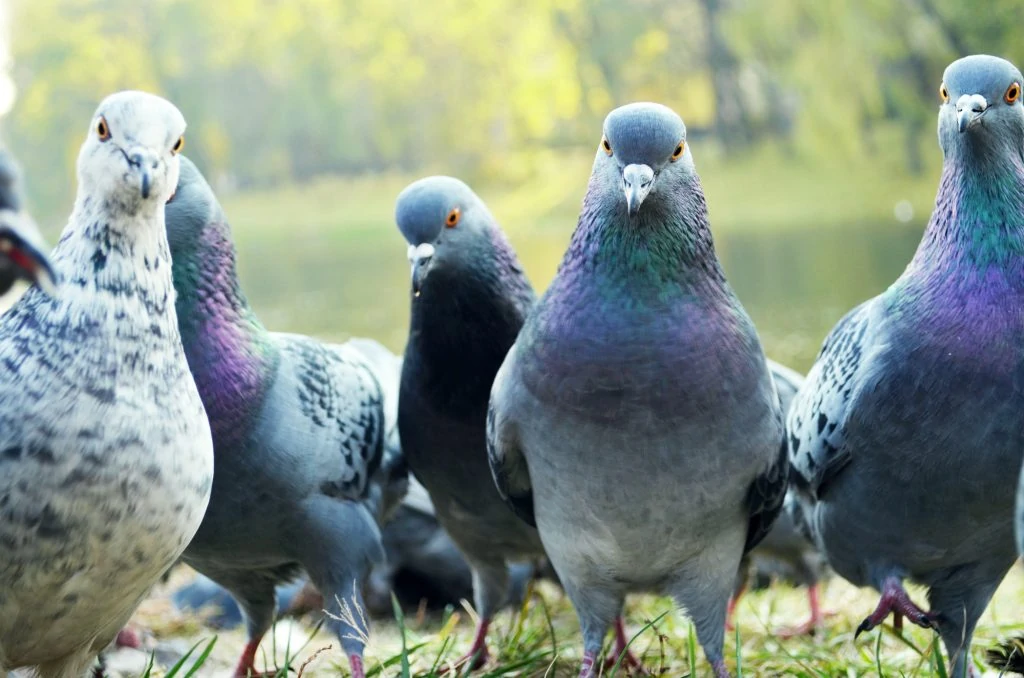
Rock Pigeons are an introduced species in Canada and they are residents here all year. They appear in 10% of summer checklists and 16% of winter checklists.
Rock Pigeons are well recognized around towns and parks and are usually blueish gray with two black bands on the wing and black on the tail tip. They have iridescent throat feathers and orange eyes.
However, they can also be white, spotted, or red.
- Columba livia
- Length: 11.8-14.2 in (30-36 cm)
- Weight: 9.3-13.4 oz (265-380 g)
- Wingspan: 19.7-26.4 in (50-67 cm)
Rock Pigeons do not migrate and can be found in all US states, southern Canada, and the Pacific Coast to Alaska.
You can find Rock Pigeons in cities, parks, and backyards, especially if there is birdseed on the ground. Some cities have ordinances against feeding pigeons as they are considered pests.
Rock Pigeon Call:
Fun Fact: Rock Pigeons have an amazing ability to find their way home using the earth’s magnetic field.
3. Great Blue Heron
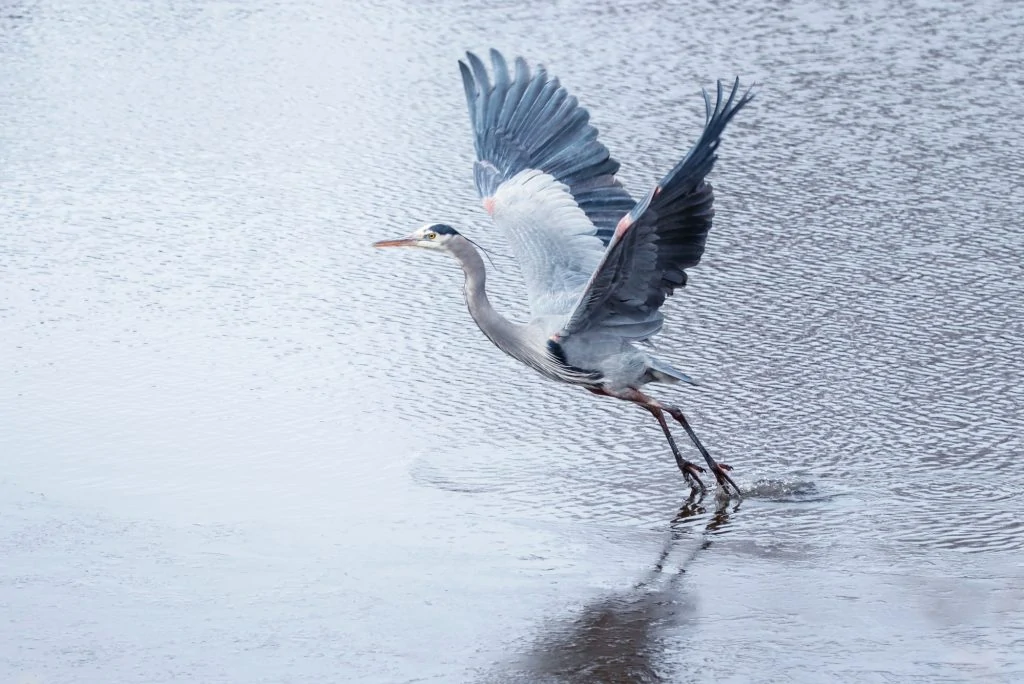
Great Blue Herons are very common in Canada, especially during the breeding season in the southern provinces. However, some can also be spotted all year.
They occur in 14% of summer checklists and 4% of winter checklists.
Great Blue Herons are very large, majestic birds that are the largest heron native to North America. Their pale gray bodies can look white in flight.
They have a white face with a black crest or plume that extends from the front of their eyes to the back of their heads. Their bills are yellow-orangish.
They have long gray necks with black and white streaking in the front, pale grayish-blue bodies with dark wingtips, and long gray legs.
The Great Blue Heron has a white morph subspecies called the Great White Heron in Florida.
- Ardea herodias
- Length: 46 – 52 in (117 – 132 cm)
- Weight: 128 oz (3628 g)
- Wingspan: 77 – 82 in (196 – 208 cm)
Great Blue Herons remain in most US states all year, but those that breed in the Mid-West and Canada migrate south.
You can find Great Blue Herons in many wetland environments. They can be present in fresh and saltwater marshes, mangrove swamps, flooded marshes, lake edges, or shorelines.
Great Blue Heron Call:
Fun Fact: Great Blue Herons defend their feeding territory with dramatic wing outstretched displays, with their heads thrown back.
4. Snow Goose
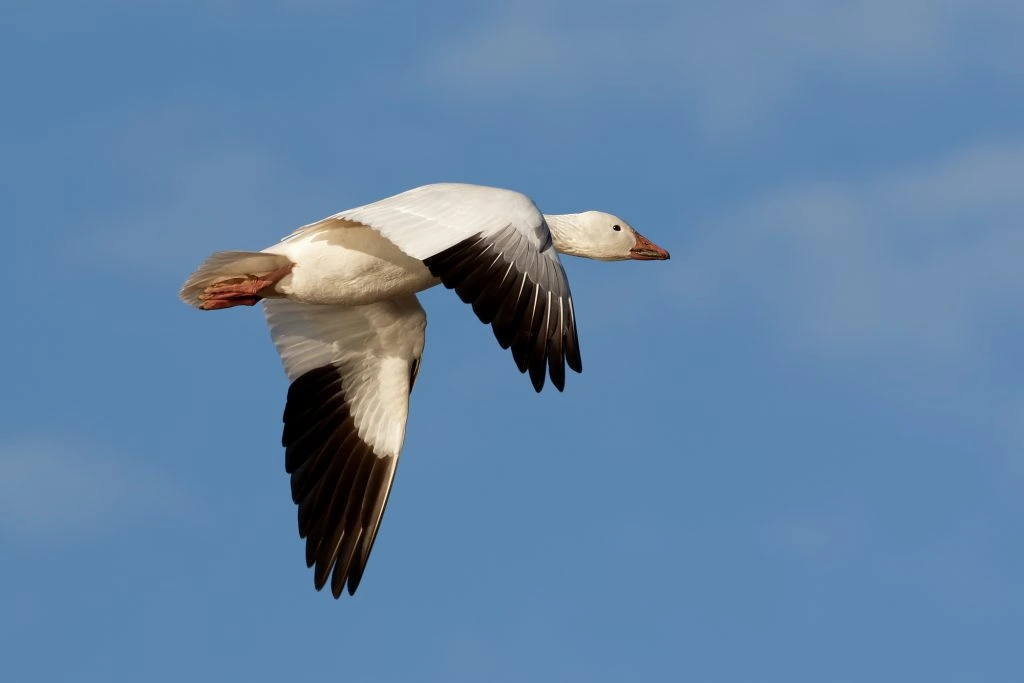
Snow Geese are spotted in Canada all year, but their numbers increase during migration from March to mid-June and September to December. They are recorded in 5% of checklists during spring and 7% of checklists during fall.
The Snow Goose is aptly named because this goose is totally white except for its black wingtips, pink bill with a black grin patch, and pink legs and feet.
Interestingly, it has another variant, called the Blue Goose, which has a white head but a dark blue-gray body. Both variants of the Snow Geese may occasionally have a “stained” head due to their feeding.
The sexes of both variants are similar though they may vary in size. Males tend to be larger than females.
Juvenile white morphs have a dusky gray-brown coloring, and juvenile blue morphs are dark gray. However, they both still have the recognizable pink bill and black grin patch.
- Anser caerulescens
- Length: 25 – 31 in (64 – 79 cm)
- Weight: 81.13 oz (2299 g)
- Wingspan: 54.3 in (138 cm)
Snow Geese breed mainly in Canada and spend winter in the United States.
You can find Snow Geese and Blue Geese together in freshwater marshes and agricultural grain fields. In winter, they favor salt marshes and coastal bays, but they still visit plowed cornfields or wetlands.
Snow Goose Call:
Fun Fact: Snow Geese choose the same color morph as themselves when breeding and will mate for life.
5. Mute Swan
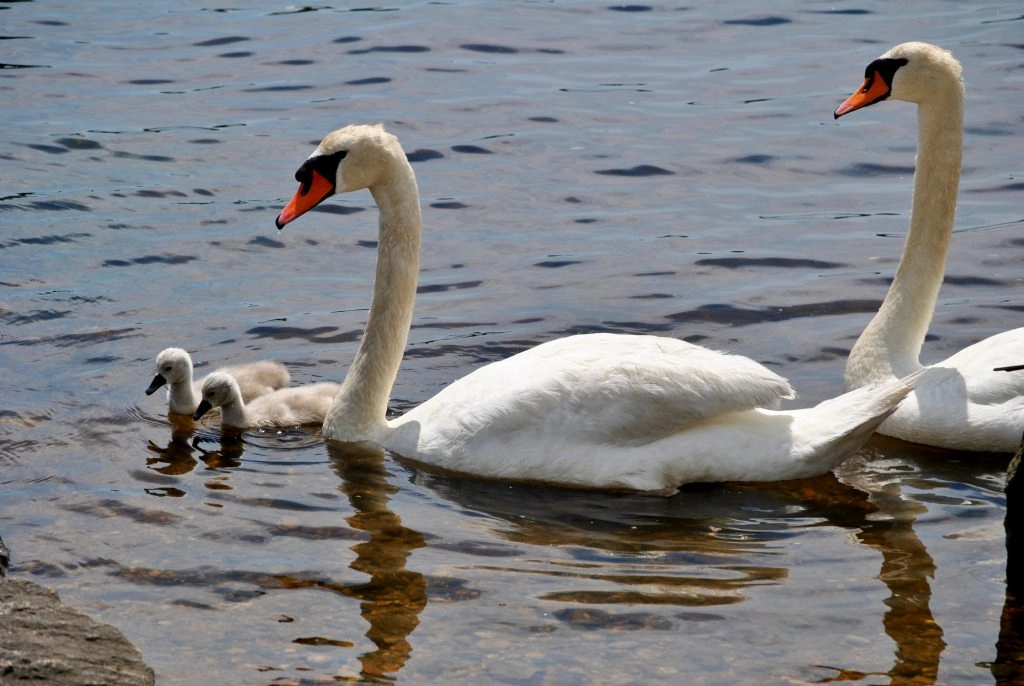
Mute Swans are non-native species in Canada that can be spotted here all year. They appear in up to 2% of summer and winter checklists.
Mute Swans are one of the largest and heaviest flying birds. They are non-native and were introduced to grace ornamental lakes and ponds but now have escaped into the wild and bred. They cause problems for native wildlife and can be aggressive.
They are entirely white, with long, graceful necks, orange bills with a large, black basal knob, black around the base of the bill, and black legs. Adults look alike, although males are larger than females.
Juveniles don’t have orange-colored bills. Instead, they have dusky-pinkish bills. They may occasionally have dusky-brownish highlights on their body.
- Cygnus olor
- Length: 56 – 62 in (142 – 157 cm)
- Weight: 416 oz (11789 g)
- Wingspan: 84 – 96 in (213 – 244 cm)
Mute Swans were originally from Europe but have spread to the United States and southern Canada. They are predominantly found in eastern US states but smaller populations are now widespread.
You can find numerous Mute Swans in city parks, protected bays, and lakes. You may also find them in shallow wetlands, rivers, and estuaries.
Mute Swans Call:
Fun Fact: Adult swans are highly protective of their young and will aggressively defend them when they sense danger or threats. They will hiss as a warning and will immediately chase and attack the predator if the warning is ignored.
6. Common Tern
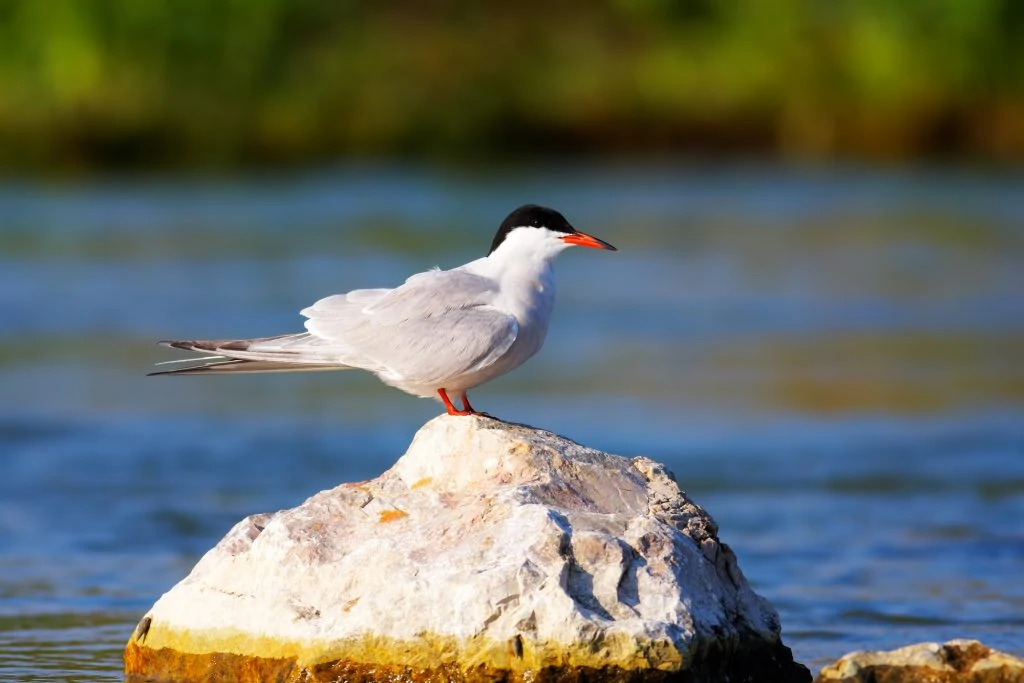
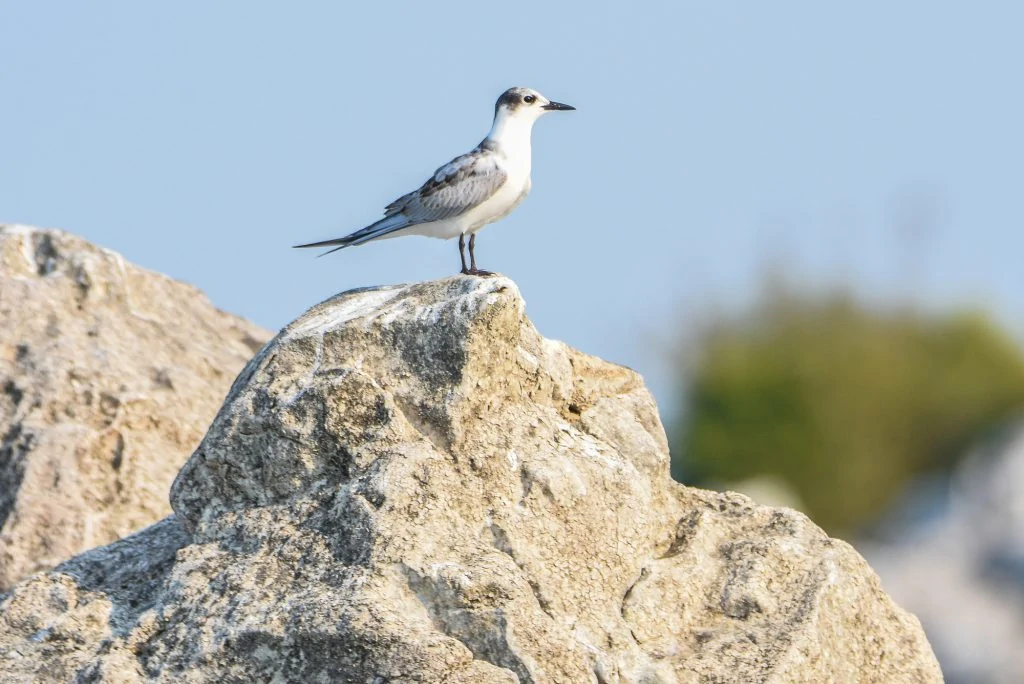
Common Terns spend the breeding season in Canada and occur in 4% of summer checklists. They arrive in April and start to migrate in October.
Common Terns are small to medium-sized seabirds considered one of the most widespread terns in North America.
Breeding Common Terns have distinct black caps and napes, white necks and chests, orange bills with a black tip, soft gray bodies which are lighter underneath, and orange legs. Their wings are dark-tipped and form a dark wedge on the upperside of the wingtips. Their tails are white and deeply forked.
Non-breeding adult Common Terns lose the front portion of their black caps and are left with white foreheads. Their bills and legs turn black.
Juveniles are a pale version of non-breeding adults.
- Sterna hirundo
- Length: 13 – 16 in (33 – 41 cm)
- Weight: 5.15 oz (146 g)
- Wingspan: 30 – 31 in (76 – 79 cm)
You can find Common Terns close to the water (whether freshwater or saltwater) as long as it’s in any open flat habitat like sand or shell beaches, firm dune areas, salt marshes, or islands during their breeding season.
In winter, Common Terns occur anywhere that has access to fish. They may be on natural sand and shell beaches, marine habitats, estuaries, and large inland lakes. They are also known to rest on boats, buoys, and piers.
Common Tern calls:
Fun Facts: In the 19th century, there was a huge decrease in the population of Common Terns due to fashion. Entire stuffed Common Terns were used to make hats in Europe and North America.
7. Trumpeter Swan
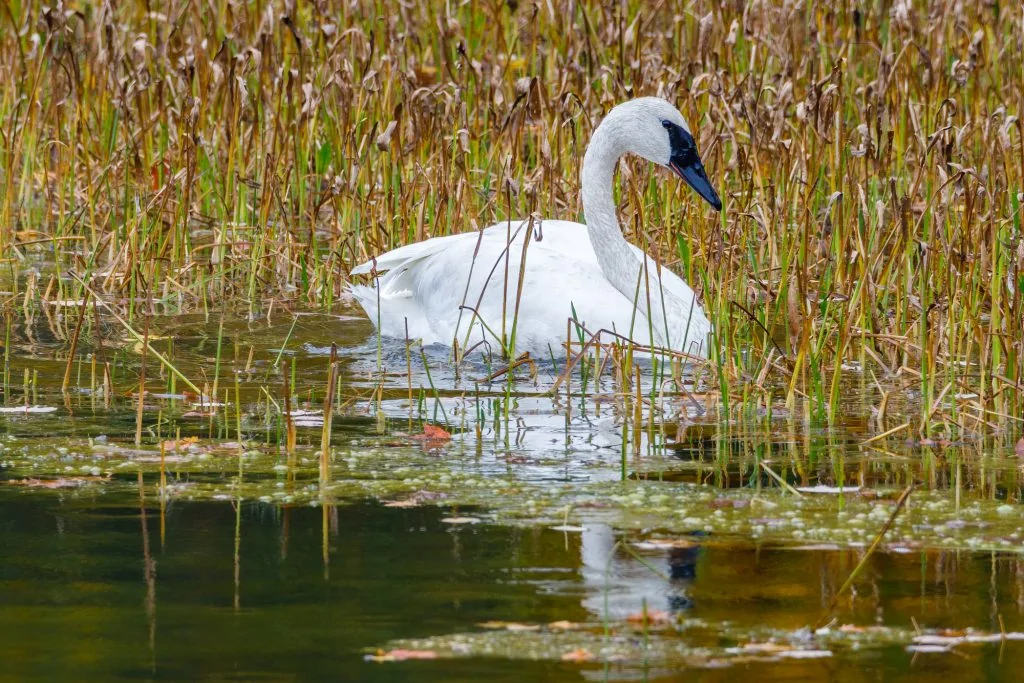
Trumpeter Swans can be spotted in Canada all year, but more from August to May. They are recorded in around 2% of summer and winter checklists.
The Trumpeter Swan has the distinction of being the longest and heaviest living bird native to North America. It is also recognized as the heaviest flying bird in the world.
Trumpeter Swans are entirely white except for their black bills, legs, and feet. There is a black patch on their face, seemingly connecting their eyes to their bills. Their heads and neck may occasionally show some rust-brown coloring because of their contact with iron elements in wetland soils.
Juvenile Trumpeter Swans are mostly dusky-gray, with a pink center on their black bills.
- Cygnus buccinator
- Length: 58 – 72 in (147 – 183 cm)
- Weight: 401.6 oz (11381 g)
- Wingspan: 72 – 102 in (183 – 259 cm)
Trumpeter swans breed in Alaska and western and southern Canada before migrating to ice-free coastal regions. Those in northwestern and northern US states often stay all year but may move around depending on the weather.
You can find Trumpeter Swans in marshes, lakes, and rivers with dense vegetation. They breed in open areas near shallow waters. They are sometimes seen on agricultural fields, too.
Trumpeter Swans Call:
Fun Fact: Trumpeter Swans generally mate for life. When nesting, there is always one adult that stays with the nest. They are both territorial and aggressive when it comes to protecting their nesting area.
8. Snow Bunting
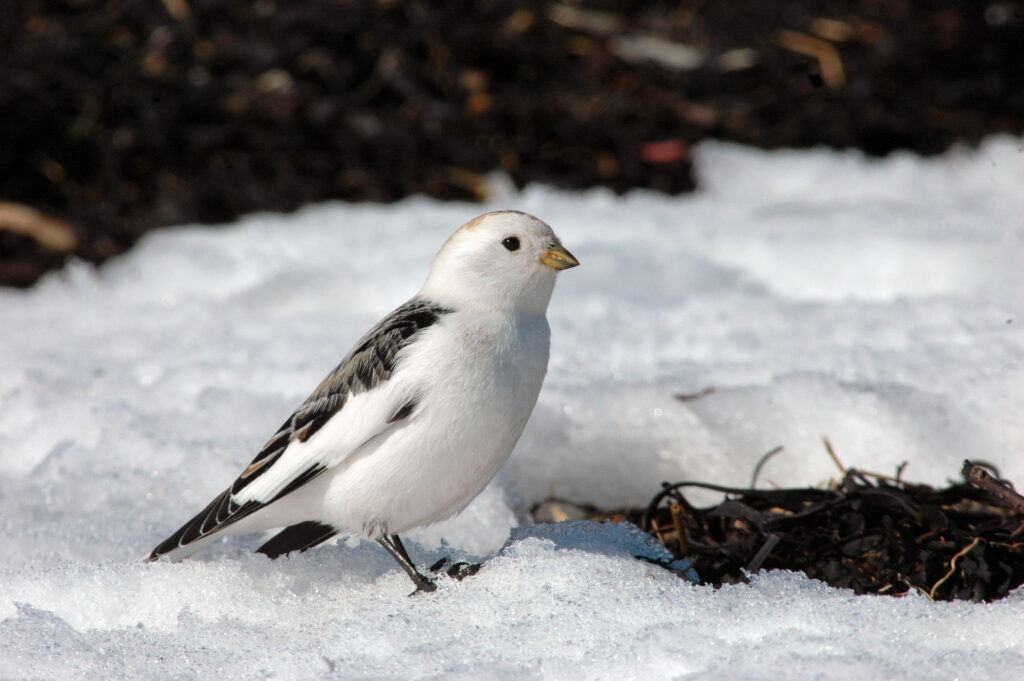
Snow Buntings are mainly spotted in northern Canada during migration and in the southern provinces during the winter season.
Snow Buntings are medium-sized, gregarious songbirds that inhabit the high Arctic.
Breeding adult males are all white except for black on their backs and wings. Breeding adult females are streaked brown on the back and pale underneath.
Non-breeding male and female Snow Buntings are quite similar with streaked backs, white undersides, and brown patches on their heads. However, non-breeding female Snow Buntings have a stronger reddish coloring than males.
Juvenile Snow Buntings are mostly gray everywhere with dark wings and lighter gray bellies.
- Plectrophenax nivalis
- Length: 6 – 7 in (15 – 17 cm)
- Weight: 1 – 2 oz (28 – 50 g)
- Wingspan: 12 – 14 in (32 – 38 cm)
Snow Buntings breed in Alaska and northern Canada before migrating to southern Canada and the United States for winter. They are also found in western Europe and eastern Russia.
You can find Snow Buntings in rocky habitats in the Arctic during summer. They will also be around areas rich in vegetation like meadows and those places with lichens. In the winter, they may be hard to find because they blend so well in their surroundings, particularly in barren fields.
Snow Buntings usually forage for weeds and seeds on the ground or collect them from flowering plants. They also occasionally eat insects and small crustaceans when near the coast.
Snow Bunting Calls:
Fun Fact: Unlike other songbirds, Snow Buntings’ feathers do not molt and change color by rubbing the brown tips of the feathers to reveal the white feathers below.
9. Great Egret
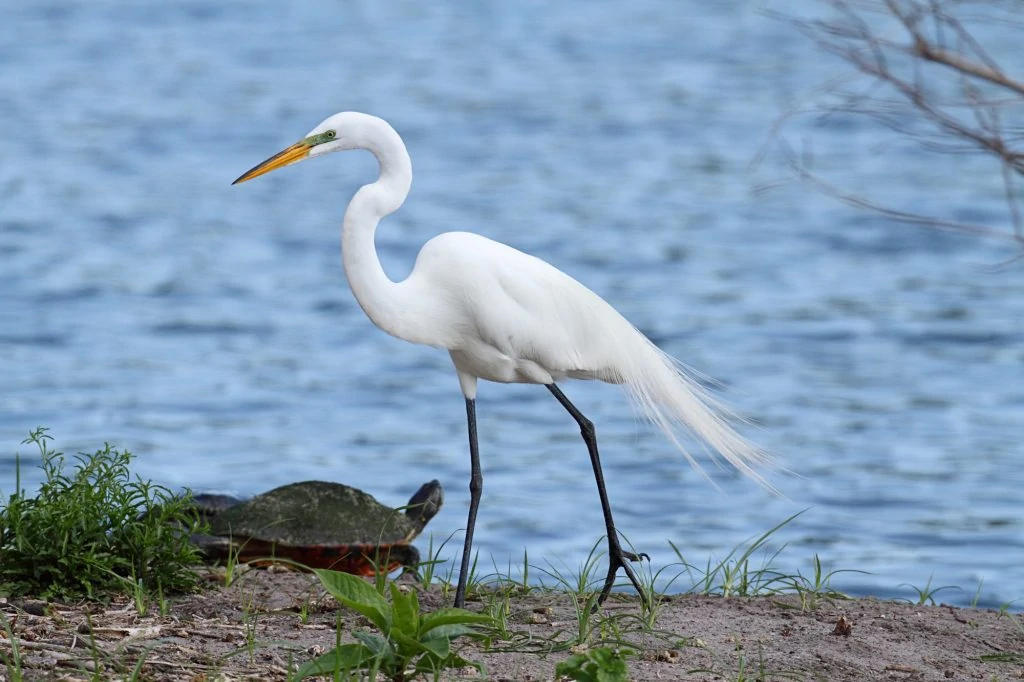
Great Egrets breed in Canada around the south of Saskatchewan, Manitoba, Ontario, and Quebec. They are spotted from April to October and occur in 2% of summer checklists.
Great Egrets are at their best during the breeding season when males have neon green facial skin and long, wispy feathers (aigrettes) extending from their backs to their tails, which they show off during courtship, like how a peacock flares out its tail.
They are large, all-white herons, which is why they’re often called Great White Herons. They are also called common egrets. These large birds are white, with dagger-like, long, bright yellow bills and long, black legs and feet.
Non-breeding males, females, and juveniles look alike.
- Ardea alba
- Length: 37 – 41 in (94 – 104cm)
- Weight: 59.96 oz (1699 g)
- Wingspan: 54 – 55 in (137 – 140 cm)
Great Egrets have a vast range around the world. Those in the southern and coastal US states remain all year, but those more inland and in Canada migrate south.
You can find Great Egrets in freshwater and saltwater marshes and tidal flats, but also fish ponds.
Great Egret Calls:
Fun Fact: The Great Egret was almost hunted to extinction because of their long white feathers (aigrettes) that were mainly used to decorate ladies’ hats.
10. Tundra Swan
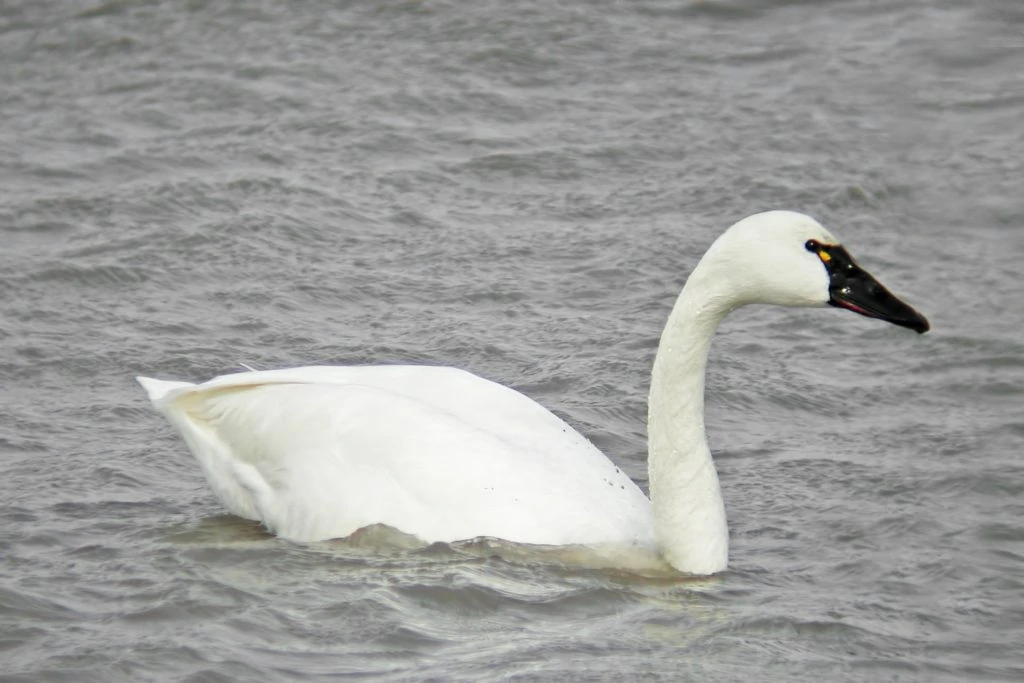
Tundra Swans are usually spotted in Canada during winter but their numbers increase during migration from March to April and October to December. They are recorded in up to 3% of checklists during migration.
Tundra Swans are identifiable because of the yellow patches at the base of their bills, but sometimes these do not appear. They have entirely white bodies with long necks and black bills, legs, and feet.
Juvenile Whistling Tundra Swans are pale brown with white highlights and a mostly pink bill with a black tip and base.
- Cygnus columbianus
- Length: 487 – 58 in (119 – 147 cm)
- Weight: 370.37 oz (10496 g)
- Wingspan: 72 – 84 in (183 – 213 cm)
Tundra Swans breed predominantly in Alaska and Canada before migrating to the United States for winter.
You can find Tundra Swans, as their name suggests, in Arctic tundra. They mostly form flocks in wetlands, marshy lakes, ponds, estuaries, and bays. They also flock together in agricultural fields.
Tundra Swans Call:
Fun Fact: The Tundra Swan used to be called “Whistling Swan” because of the sound their wings make in flight.
11. Northern Gannet
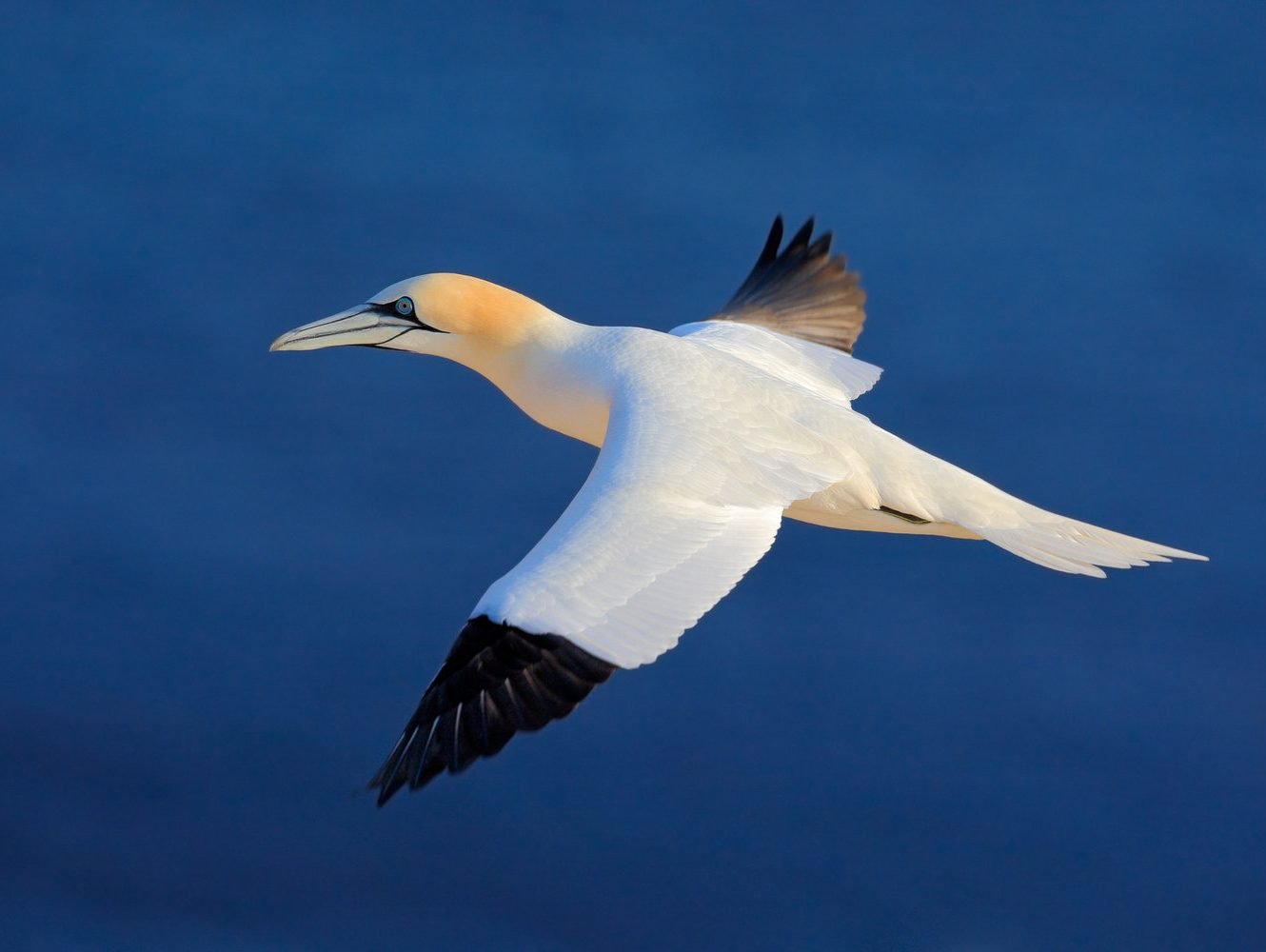
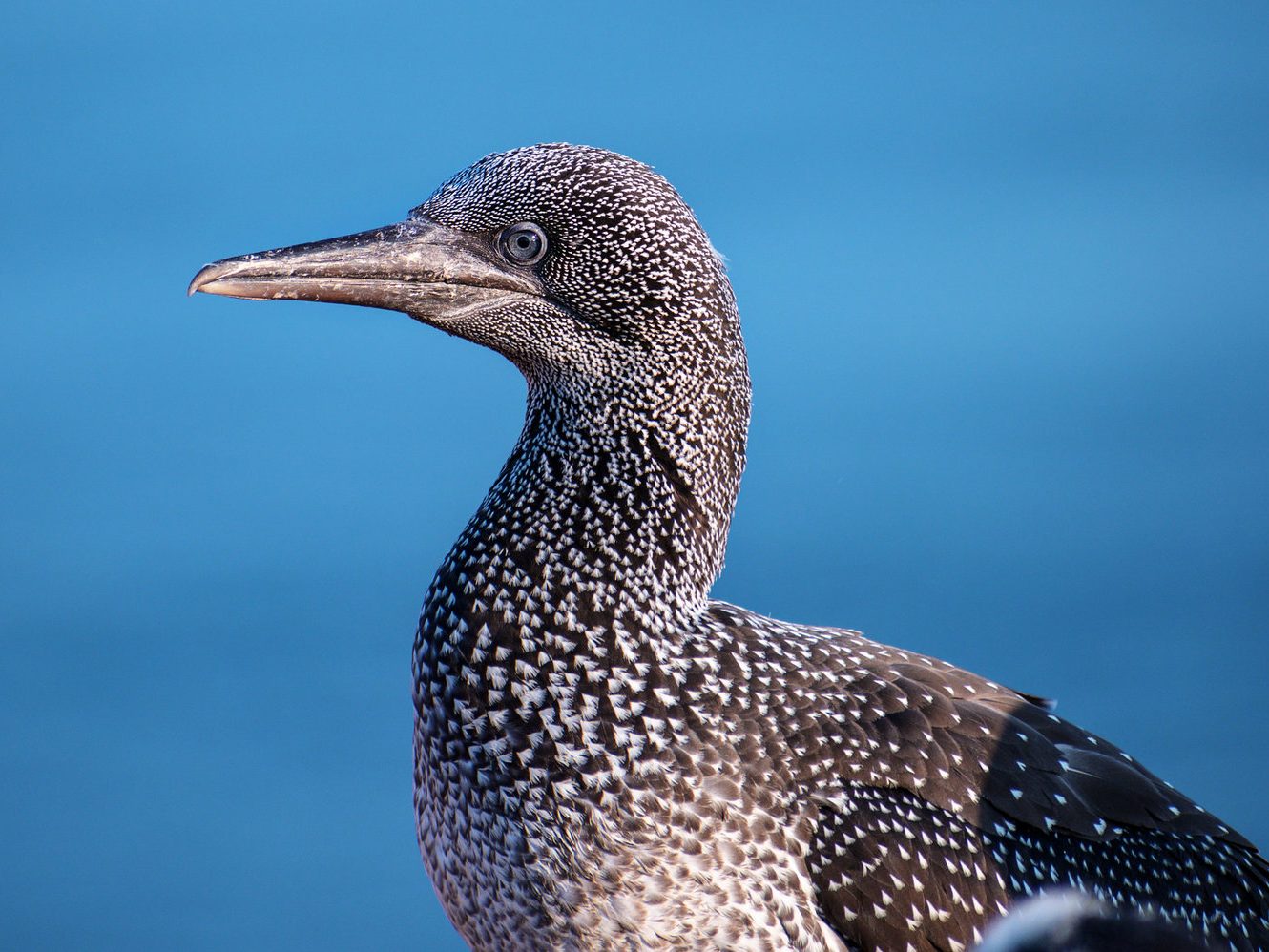
Northern Gannets spend the breeding season in Canada and appear in 1% of summer checklists. They are spotted around the southeastern provinces.
Northern Gannets are the largest among the gannet family and the largest seabird in the Western Palearctic. Males and females are similar in size and appearance.
They are generally white with a yellow-orange buff tinge on their heads, which may be darker during the breeding season. Their eyes and bills appear to be outlined in black.
Their wings are long and slender and have a dark-brown or black edge. Their bills and feet are gray. Their tails are all-white.
Juveniles look nothing like the adults. They are brown overall with white spots. They also have no outline marking their eyes and bills. They have a white patch on their tails. Immatures appear as a combination of both the juvenile and adult.
- Morus bassanus
- Length: 35 – 40 in (89 – 102 cm)
- Weight: 104 oz (2947 g)
- Wingspan: 65 – 71 in (165 – 180 g)
Northern Gannets breed around coastal eastern Canada and spend the winter along the Atlantic coast of the United States. They are also found in western Europe and North Africa.
You can find Northern Gannets on the open ocean and large bays. Their nesting and breeding colonies are often on cliffs and rocky ledges of the Canadian Atlantic Coast. Bonaventure Island in Quebec is the largest colony in North America with 60,000 nests as of 2009.
Northern Gannet Calls:
Fun Fact: It takes Northern Gannets five years to fully grow into their adult physical appearance.
12. Snowy Owl
Snowy Owls are vulnerable species in Canada and although some are spotted in the northern provinces during the breeding season, they are most common during winter in the southern provinces, from November to April. They occur in 2% of winter checklists.
13. American White Pelican
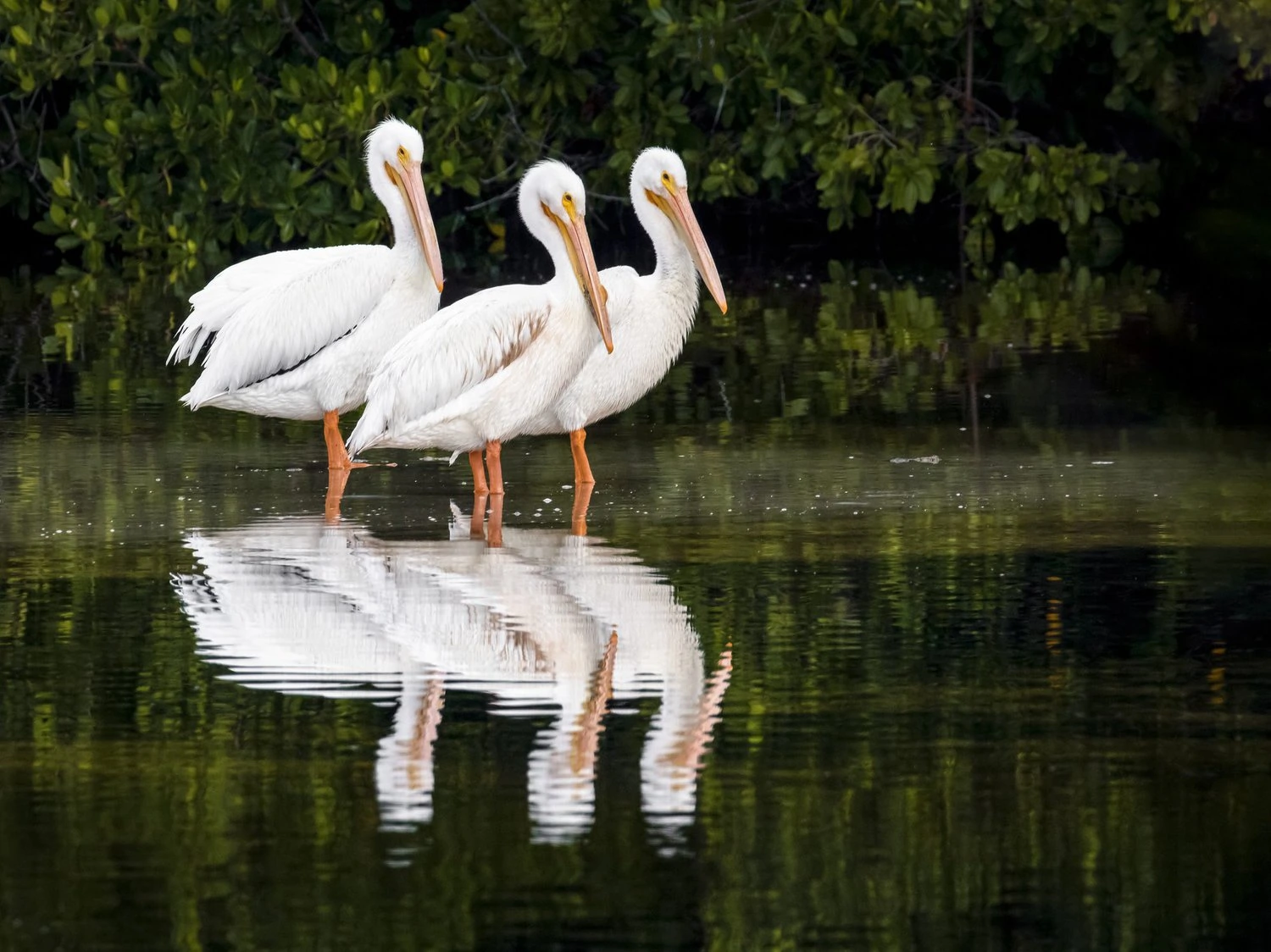
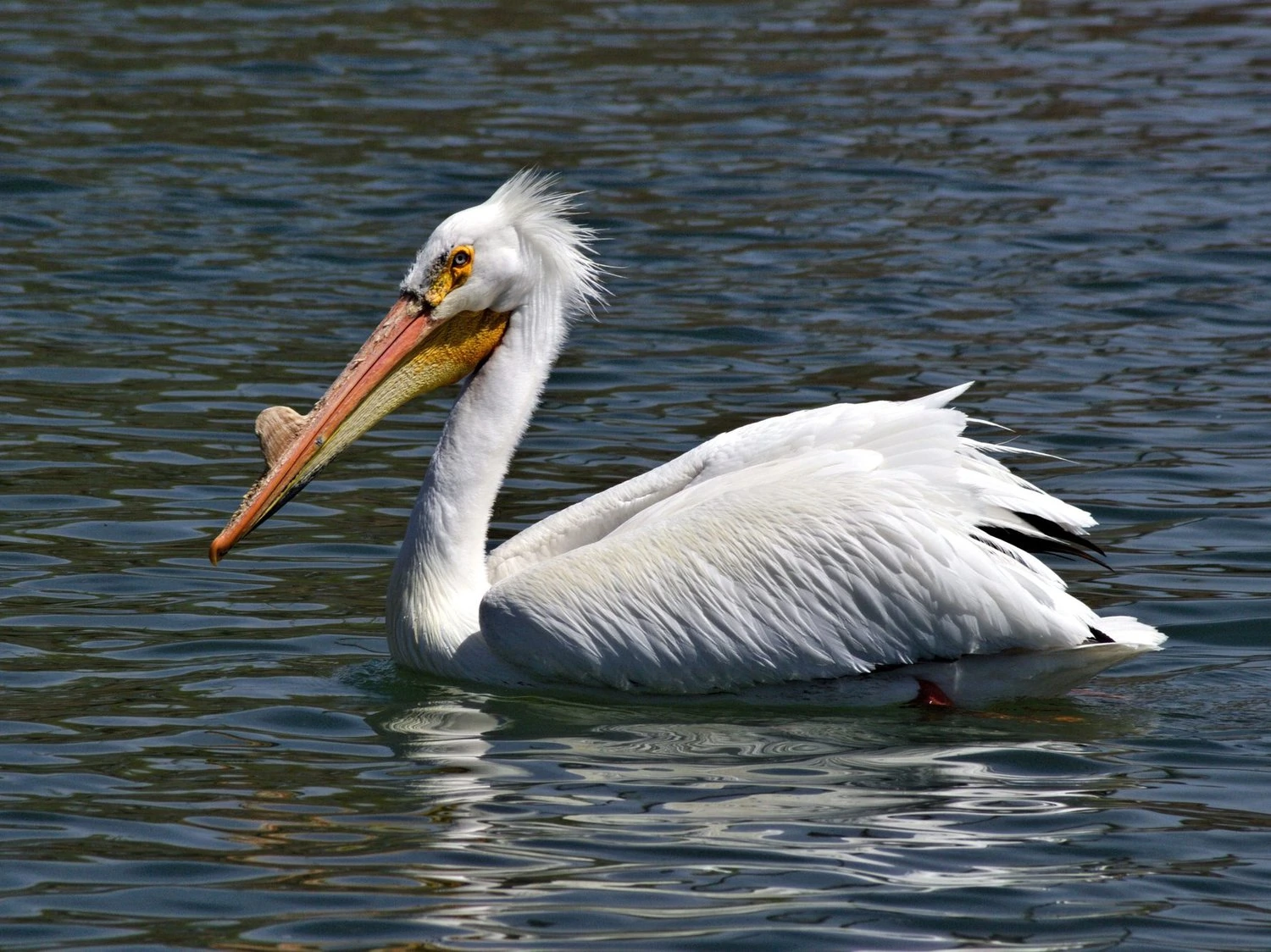
American White Pelicans are more frequently spotted in Canada during the breeding season from mid-April to mid-October, but a few hang around all year. They are recorded in 1% of summer checklists.
American White Pelicans are large soaring birds that have the second-largest average wingspan of any North American bird.
Non-breeding adult American White Pelicans are white all over, except for black flight feathers that are only visible when in flight or when the wings are spread. Juveniles have light gray feathers with darker brown napes.
Breeding adult American White Pelicans are still white but they grow a yellow plate on their upper bills, like a horn, and around their eyes, bills and legs become brighter orange.
- Pelecanus erythrorhynchos
- Length: 60 – 63 in (152 – 160 cm)
- Weight: 246.4 oz (6983 g)
- Wingspan: 96 – 110 in (244 – 279 cm)
American White Pelicans breed in remote lakes inland in North America before spending the winter on the southern Pacific Coast of the US, the Gulf of Mexico, Mexico, and Central America. They can be spotted during migration in western and central US states.
You can find American White Pelicans in shallow freshwater lakes, wetlands, and edges of lakes and rivers. In the winter, you can find them in coastal bays, inlets, and estuaries where they forage in shallow water and rest on sandbars.
American White Pelican calls: These birds are usually silent or only make a few grunts. However, the young can be noisy in the large colonies begging for food.
Fun Facts: The long and huge bill of the American White Pelican is capable of holding three gallons of water. When it scoops up fish from the sea, it tilts its bill down to drain the water so it can then swallow the fish that’s left inside its throat sac.
14. Ross’s Goose
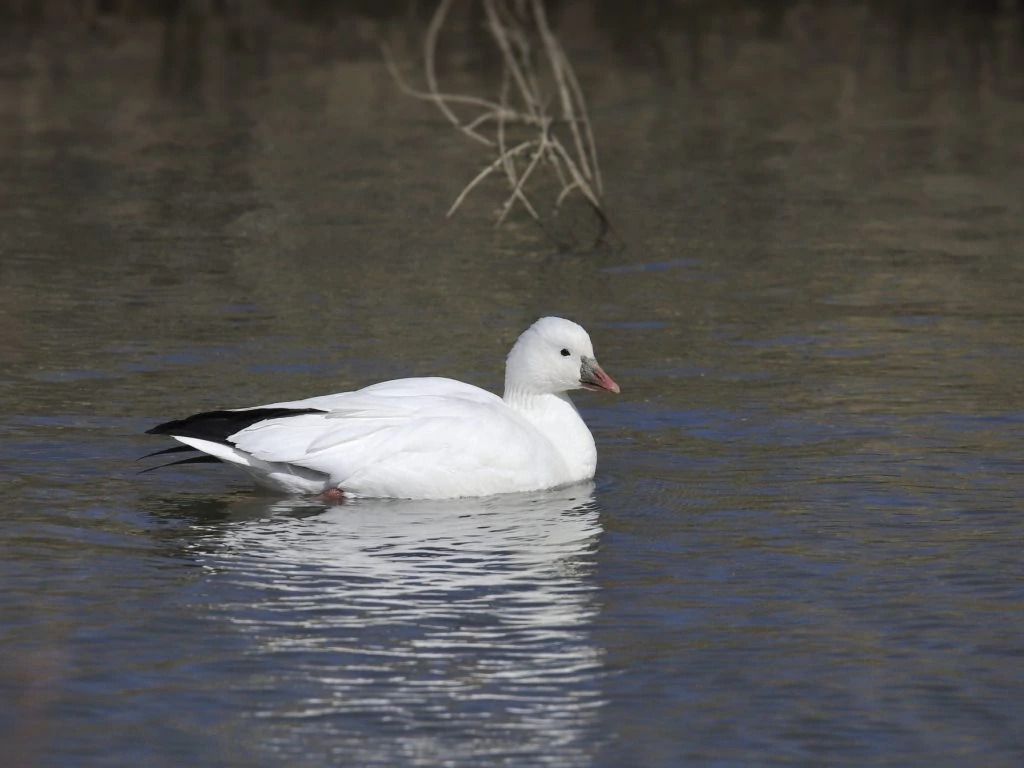
Ross’s Geese have sightings in Canada all year, but you stand the best chance during the fall migration, from October to November.
Ross’s Geese are pretty similar to Snow Geese, whom they often flock with. They are white all over except for their short, gray-based red-orange bills, short and stubby, pink-red legs and feet, and black wingtips. Both sexes are similar, but the female is slightly smaller.
There is a dark phase variant of Ross’s Goose, but it’s extremely rare. It has a white head, a brownish bill with a red patch, dark gray throats, underparts, and back.
- Anser rossii
- Length: 21 – 26 in (53 – 66 cm)
- Weight: 59.2 oz (1678 g)
- Wingspan: 47 – 54 in (119 – 137 cm)
Ross’s Geese breed in northern Canada and spend the winter in the United States.
You can find Ross’s Geese in salt and freshwater marshes during winter. During the breeding season, they will nest on the arctic tundra.
Ross’s Goose Call:
Fun Fact: Ross’s Geese are the smallest geese in North America.
15. Willow Ptarmigan

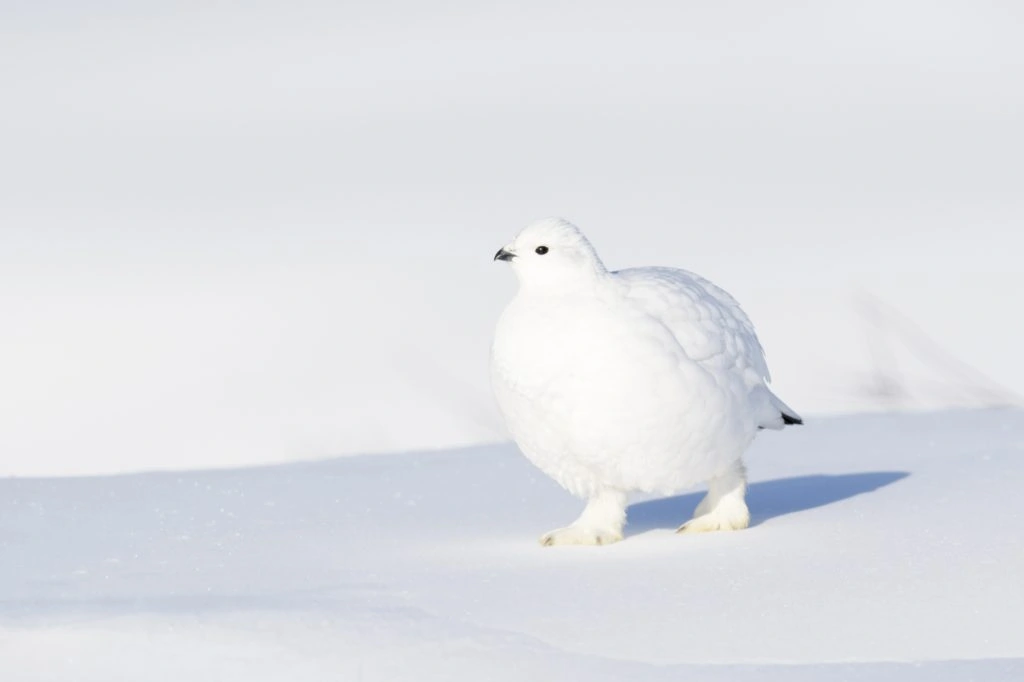
Willow Ptarmigans are spotted in northern Canada during the breeding season.
Willow Ptarmigans also called “willow grouse”, are short, plump, and chicken-like birds with feathered legs and feet from the grouse family. Males and females are similar in size but have different seasonal physical appearances.
During the summer and the breeding season, adult male Willow Ptarmigans have brown heads, necks, and upper breasts with a reddish hue. They have bright red eye combs or eyebrows, and their eyes have white eye-rings. Their bills are short, curved, and black. Their wings and underparts are white. Their tails are black.
Adult female Willow Ptarmigans are a combination of brown, black, and white with a mottled pattern. They have barely-visible red eyecombs, and their bills are also short, curved, and black.
When winter comes, adult Willow Ptarmigans are completely white except for their black eyes and bills and the black edges on their tails.
- Lagopus lagopus
- Length: 15 – 17 in (38 – 43 cm)
- Weight: 2.8 oz (589 g)
- Wingspan: 20 – 22.5 in (51 – 57 cm)
Willow Ptarmigans are predominantly found in Canada and northern Europe.
You can find Willow Ptarmigans in damp areas like pine and birch forests and thickets with willow and alder trees during the breeding season. In the fall, they move into drier and stonier habitats as they molt into their winter plumage. In winter, females move into lower altitudes and densely vegetated areas.
Willow Ptarmigan calls:
Fun Facts: In Britain, they’re called Red Grouse as their feathers don’t turn white when it’s winter there.
16. Gyrfalcon
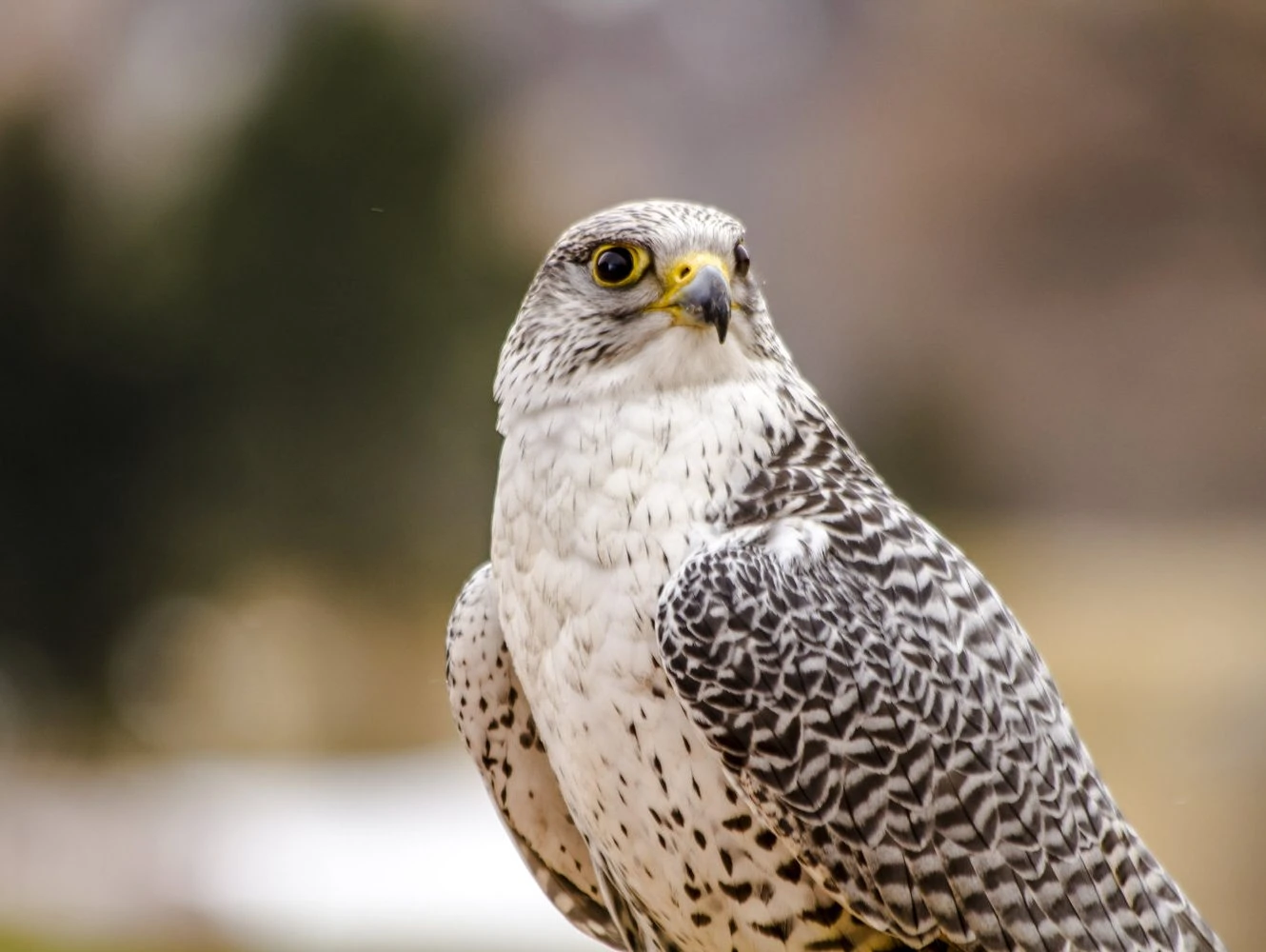
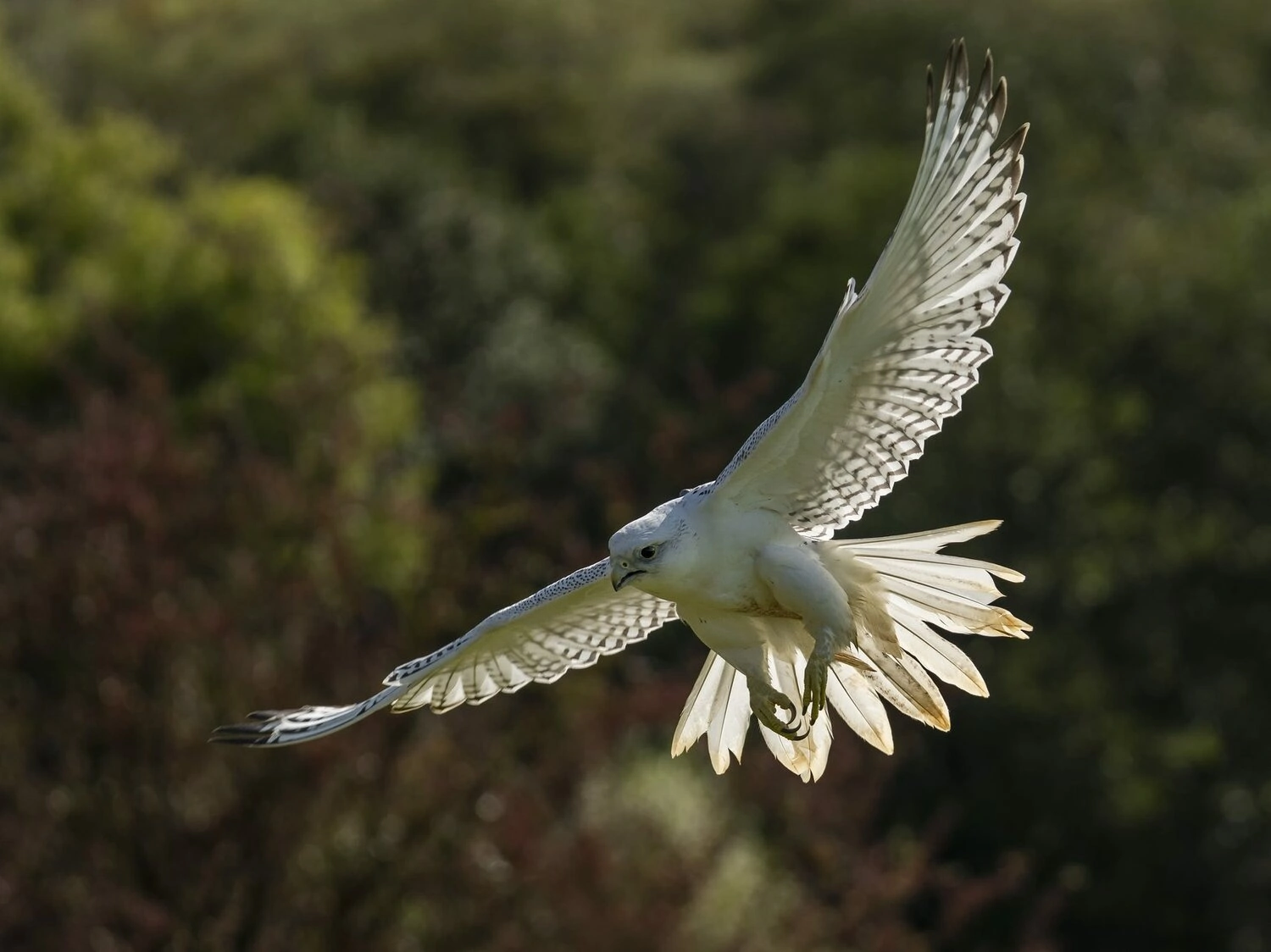
Gyrfalcons are usually spotted in Canada during winter but some stay all year in the northern provinces of the country.
Gyrfalcons are the largest Falcons and are apex predators of the Arctic, where they snatch birds from the sky or dive at great speed to catch unsuspecting prey from the ground.
Their coloring varies greatly but generally have three morphs – white, silver/gray, and dark. Silver/gray is most common in North America
The silver/gray morphs are heavily banded gray and white on their upperparts but some are mostly gray without obvious banding. Their underparts are evenly spotted and white at the throat. Juveniles have solid dark heads and are browner overall.
The White morphs of Gyrfalcons are white with brown/black barring on their upperparts with dark wingtips and a white tail. Some birds have barring on their tails and spots on their breasts. Juveniles are similar but have more barring on their upperparts but have faint streaks on their underparts.
- Falco rusticolus
- Length: 20 – 25 in (51 – 64 cm)
- Weight: 41.6 oz (1179 g)
- Wingspan: 48 – 64 in (122 – 163 cm)
Gyrfalcons are found predominantly in the arctic and sub-arctic around the world. Those that breed in the high arctic of Canada migrate to the rest of Canada and into the United States for winter.
You can find Gyrfalcons in one of the harshest places on earth, the arctic tundra (treeless shrublands and plains). They usually stay on cliffs near shorelines or rivers and with a vast open space where they can easily hunt prey. When they migrate during the winter, they stay in areas with plenty of birds for them to hunt, like coasts, reservoirs, grasslands, farmlands, and river valleys.
Gyrfalcon Call:
Fun Fact: When the chicks aren’t able to finish off their meal, the female Gyrfalcon will keep or store their leftovers behind some vegetation to retrieve later.
17. Snowy Egret
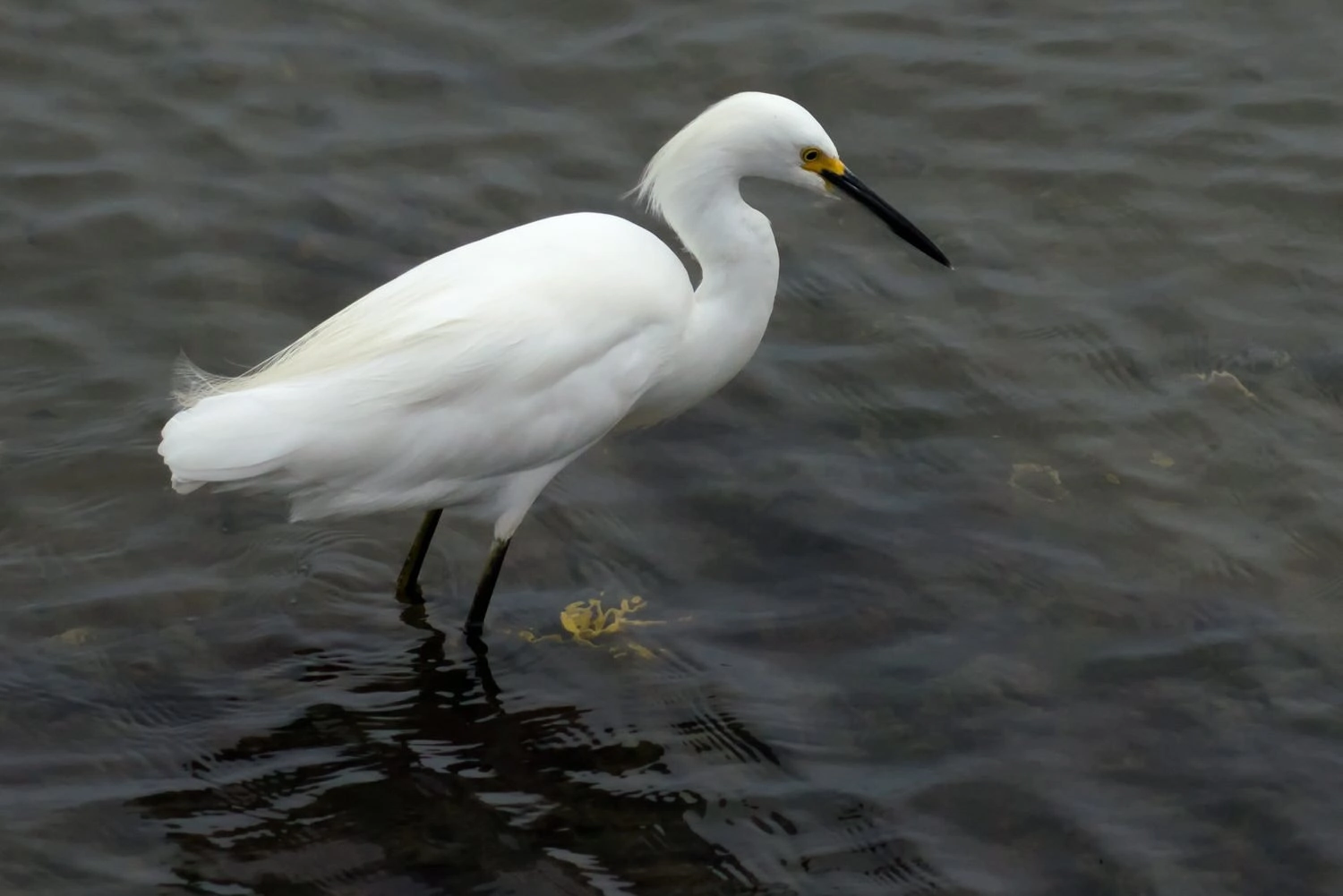
Snowy Egrets are not very common in Canada but there have been occasional sightings around the southeastern provinces during summer and migration.
Snowy Egrets, as their name suggests, are small, all-white herons. They have yellow irises and skin around their eye, long, black bills, long, black legs, and bright yellow feet.
During the breeding season, long, lacy feathers appear on their heads, necks, and backs. Their lores or facial skin turn reddish-pink, and their toes turn orange-red during courtship.
Interestingly, these areas of their bodies also become bright red during aggressive encounters.
Juveniles are similar to adults but without head plumes. The colors on their bills and legs are also lighter, with lores and legs more greenish-yellow.
- Egretta thula
- Length: 22 – 27 in (56 -69 cm)
- Weight: 16.75 oz (475 g)
- Wingspan: 39.4 in (100 cm)
Snowy Egrets migrate from most US states, except along the Gulf Coast and southwest coast. They remain all year in Mexico, Central, and South America.
You can find Snowy Egrets in shallow, wetland habitats such as marshes, riverbanks, lakesides, pools, salt marshes, and estuaries. For nesting, they prefer swamp forests with protective trees and bushes.
Snowy Egret Call:
Fun Fact: Snowy Egrets were almost hunted down to extinction because of their beautiful white head feathers that were the perfect decoration or accessory to women’s hats.
18. Little Blue Heron – Juvenile
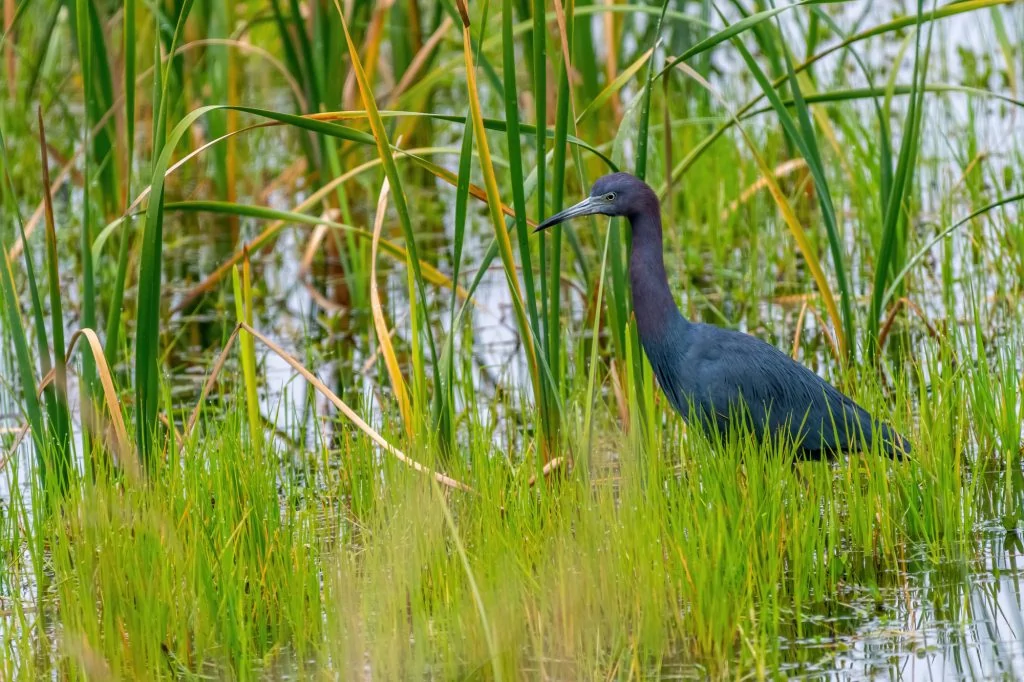
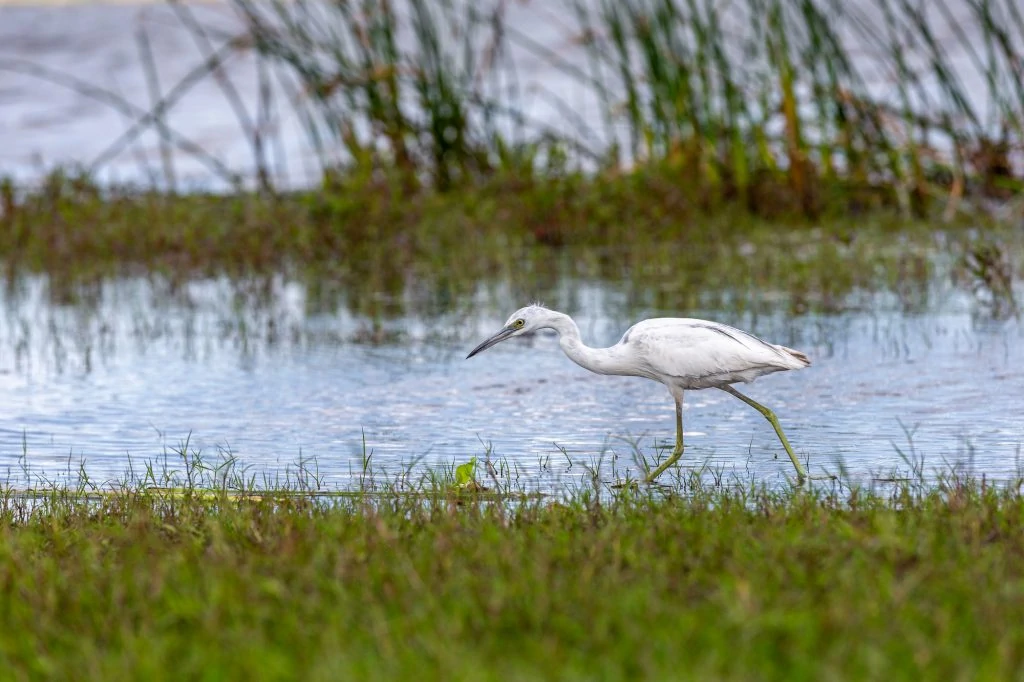
Little Blue Herons are not often spotted in Canada but you might spot some migrating across the south of the country.
Adult Little Blue Herons are actually not so little. They’re medium to large-sized with long, elongated bodies. Their heads and necks have a purplish hue with dangling feathers across the nape.
Their eyes are pale yellow and may turn gray-green during the breeding season. Their long, dagger-like bills are two-toned – pale blue or grayish with black tips. Their bodies are slate-blue. Their legs are long and black to gray-green.
Juvenile Little Blue Herons are totally white during their first year of life before becoming a mix of dark gray, blue, and white.
- Egretta caerulea
- Length: 24 – 29 in (61 – 74 cm)
- Weight: 16.22 oz (460 g)
- Wingspan: 40 – 41 in (102 – 104 cm)
Little Blue Herons breed in eastern US States before migrating south, but those along the Gulf Coast and Mexico into south America remain all year.
You can find Little Blue Herons around water, whether in swamps, marshes, ponds, streams, lagoons, tidal flats, canals, ditches, fish hatcheries, or flooded fields.
Little Blue Heron Calls:
Fun Fact: Because of the white coloring of Juvenile Little Blue Herons, their presence among Snowy Egrets so they can catch more fish and have extra protection against predators.
19. Rock Ptarmigan
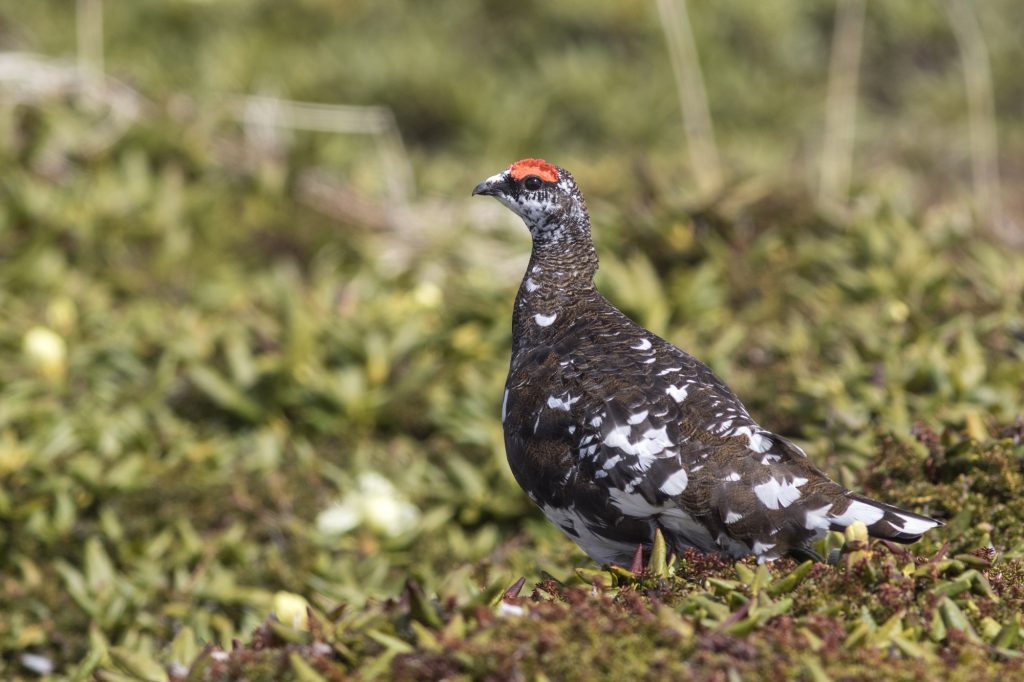

Rock Ptarmigans are found all year in Canada, especially in the northern and western provinces.
The chunky Rock Ptarmigan is best known for its different camouflage colors during the summer and winter seasons. It is also very similar in appearance to the Willow Ptarmigan.
Breeding male Rock Ptarmigans have grayish or dark brown mottled heads and upperparts during the summer season. They have red eyecombs and short, down-curved black bills. They have white underparts and wings, and white feathered legs and feet.
Breeding female Rock Ptarmigans are similar to males but they are brown, black, and white and smaller.
In winter, non-breeding male Rock Ptarmigans are almost all white except for their striking red eyecombs, distinct black eyeline, bills, and outer tail feathers. Non-breeding females are similar but without the eyeline and comb.
Juveniles look similar to breeding females but instead of having white wings, it’s only the tip that bears any white color.
- Lagopus muta
- Length: 13 – 14 in (33 – 36 cm)
- Weight: 14.9 oz (422 g)
- Wingspan: 23 in (58 cm)
Rock Ptarmigans are found in Canada, Greenland, and western Europe.
You can find Rock Ptarmigans in the dry, rocky tundra, hence their name. Their camouflage for summer is especially effective since it seems that they disappear in the face of the rocky terrain. They are likely to stay in places with some vegetation.
Winter habitats for males are usually alpine-like environments while females prefer more hiding places.
Rock Ptarmigan calls:
Fun Fact: Male Rock Ptarmigans dirty their white feathers after mating to hide from predators as the snow melts and they wait to molt. They also use their feathered feet to dig burrows in the snow, keeping them out of the intense cold.
20. White-tailed Ptarmigan
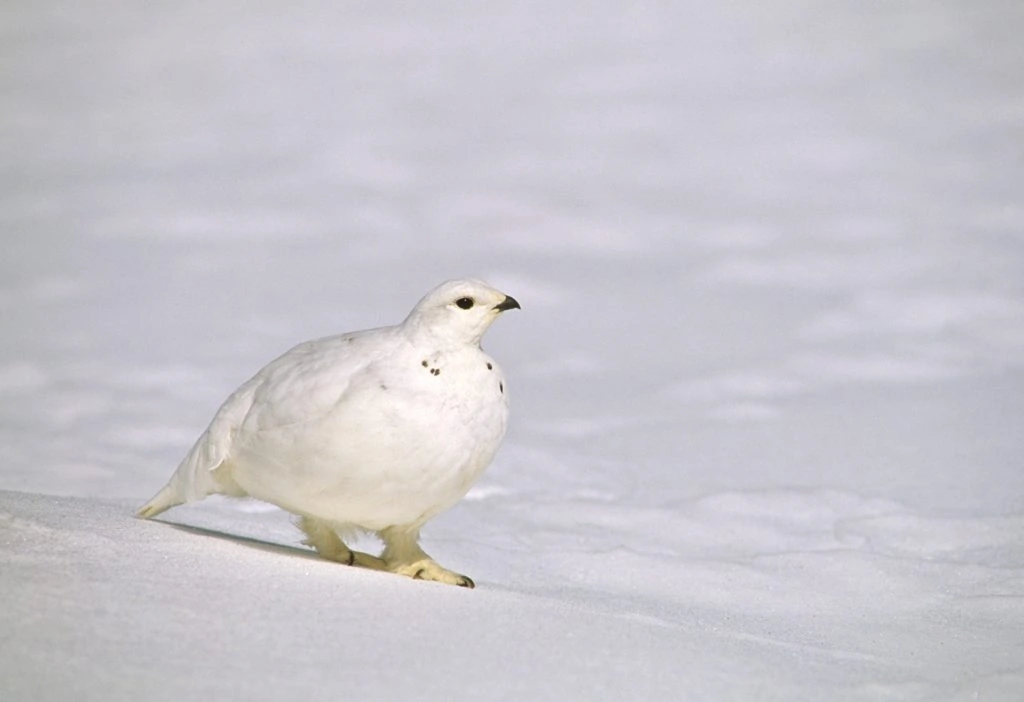
White-tailed Ptarmigans are residents of Canada all year and are mainly found in Yukon, British Columbia, and Alberta.
Adults are totally white except for their dark eyes and black bills. From spring to fall, they undergo several molts. In the summer, Adult male White-tailed Ptarmigans have speckled grayish-brown bodies, white bellies, wings, and tails and sometimes their red eyebrows become visible.
Adult females are barred brown and black on top, and have a yellowish wash underneath, but their tails are white like the males. In the fall, their feathers exhibit a reddish hue to blend in with the fall colors of their environment.
- Lagopus leucura
- Length: 11.8 – 12.2 in (30 – 31 cm)
- Weight: 11.6 – 16.9 oz (330 – 480 g)
- Wingspan:
You can find White-tailed Ptarmigans exclusively in alpine mountains all year round. They often roost in snowbanks or near the timber line during winter. During summer, they stay close to rocks and tall vegetation where they’re protected from predators.
White-tailed Ptarmigans mostly eat plant buds, stems, seeds, leaves, fruits, and flowers. They also eat insects during the summer. In the winter, they eat pine needles, seeds, alder buds, and twigs.
White-tailed Ptarmigan Calls:
Fun Fact: White-tailed Ptarmigans are so named because their tail feathers remain white all throughout their lives.
21. Whooping Crane
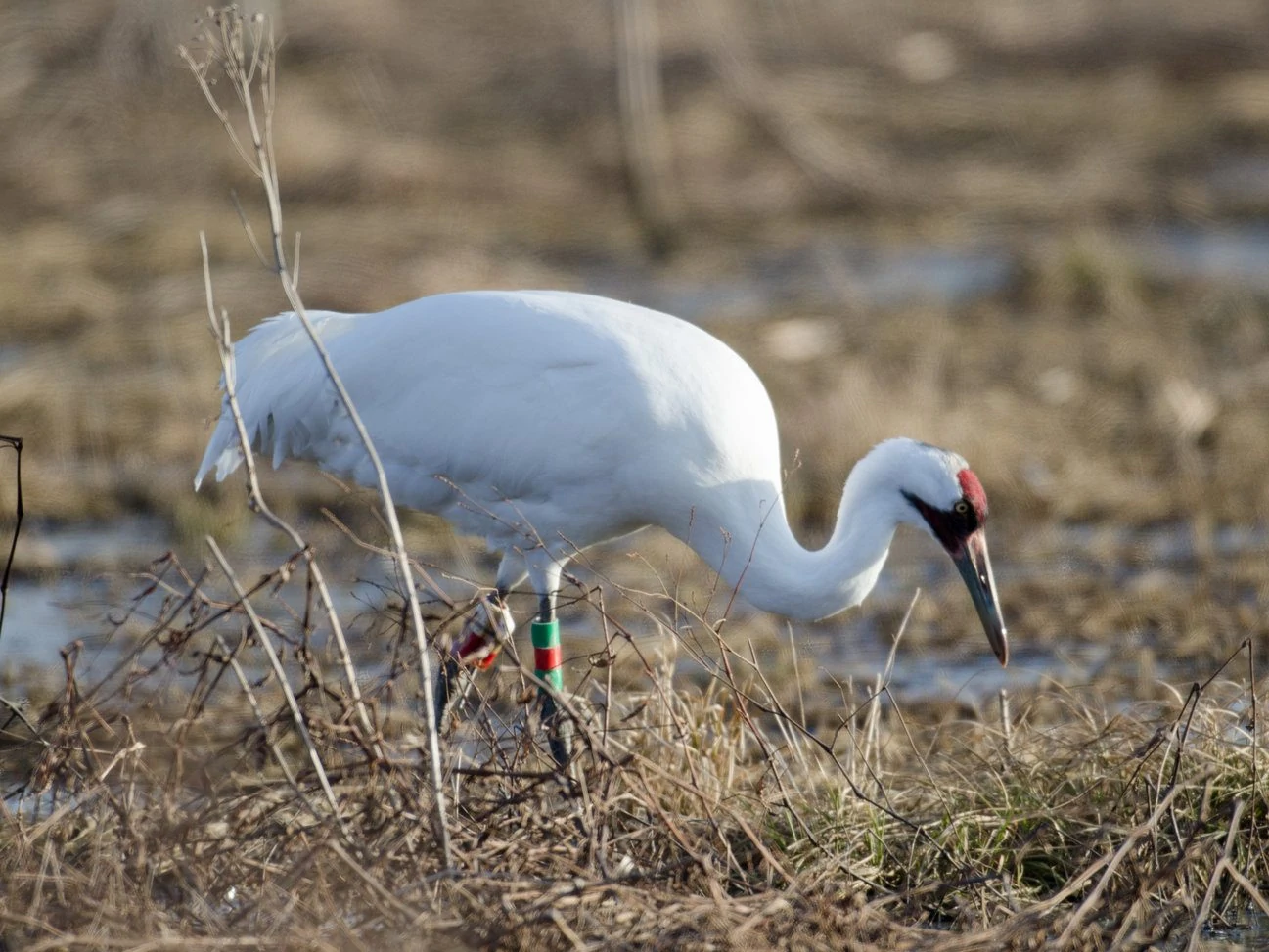
Whooping Cranes are not very common in Canada but they have been spotted around Alberta, Saskatchewan, and Manitoba during migration.
Whooping Cranes are majestic birds with graceful courtship dances and trumpeting calls. They were so endangered that only around 20 survived in the 1940s but efforts to save them have increased their number to 600.
They have all-white bodies, a red crown, a black facial mask, and black feathers that are only visible in flight on their 7-foot wingspan. Their long legs are also black.
Juveniles also have white bodies but they have several splotches of rust. Their heads and upper necks are rust-brown.
- Grus americana
- Length: 52 in (132 cm)
- Weight: 204.8 oz (5804 g)
- Wingspan: 87 in (221 cm)
Whooping Cranes breed in a small area in Canada and migrate to Texas and a reintroduced population that breeds in Wisconsin migrates to Florida.
You can find Whooping Cranes in shallow wetlands and plenty of bulrushes and aquatic plants during the breeding season. Their wintering grounds are shallow bays, tidal flats, and estuarine marshes and sometimes on nearby farmlands and rolling grasslands.
Whooping Crane Calls:
Fun Fact: The Whooping Crane has the distinction of being the tallest bird native to North America at nearly five feet tall, nearly as tall as a human and they have been taught their migration routes to reintroduced areas by following ultralight aircraft.
How Frequently White Birds Are Spotted In Canada In Summer And Winter
Checklists are a great resource to find out which birds are commonly spotted in your state. These lists show which white birds are most frequently recorded on checklists on ebird in summer and winter in Canada.
White Birds in Canada in summer:
Ring-billed Gull 22.0%
Great Blue Heron 14.5%
Rock Pigeon 10.5%
Common Tern 4.6%
Great Egret 2.1%
Snow Goose 1.9%
Mute Swan 1.8%
American White Pelican 1.6%
Trumpeter Swan 1.2%
Northern Gannet 1.0%
Tundra Swan 0.4%
Snow Bunting 0.3%
Willow Ptarmigan 0.2%
Snowy Owl 0.1%
Ross’s Goose 0.1%
Snowy Egret 0.1%
Rock Ptarmigan <0.1%
Little Blue Heron <0.1%
White-tailed Ptarmigan <0.1%
Gyrfalcon <0.1%
Whooping Crane <0.1%
White Birds in Canada in winter:
Rock Pigeon 16.1%
Ring-billed Gull 7.7%
Snow Bunting 4.6%
Great Blue Heron 4.0%
Snowy Owl 2.8%
Trumpeter Swan 2.8%
Mute Swan 2.6%
Snow Goose 1.0%
Tundra Swan 0.8%
Gyrfalcon 0.2%
Willow Ptarmigan 0.1%
Ross’s Goose 0.1%
Northern Gannet 0.1%
Great Egret <0.1%
American White Pelican <0.1%
White-tailed Ptarmigan <0.1%
Rock Ptarmigan <0.1%
Snowy Egret <0.1%
Common Tern <0.1%
Little Blue Heron <0.1%

